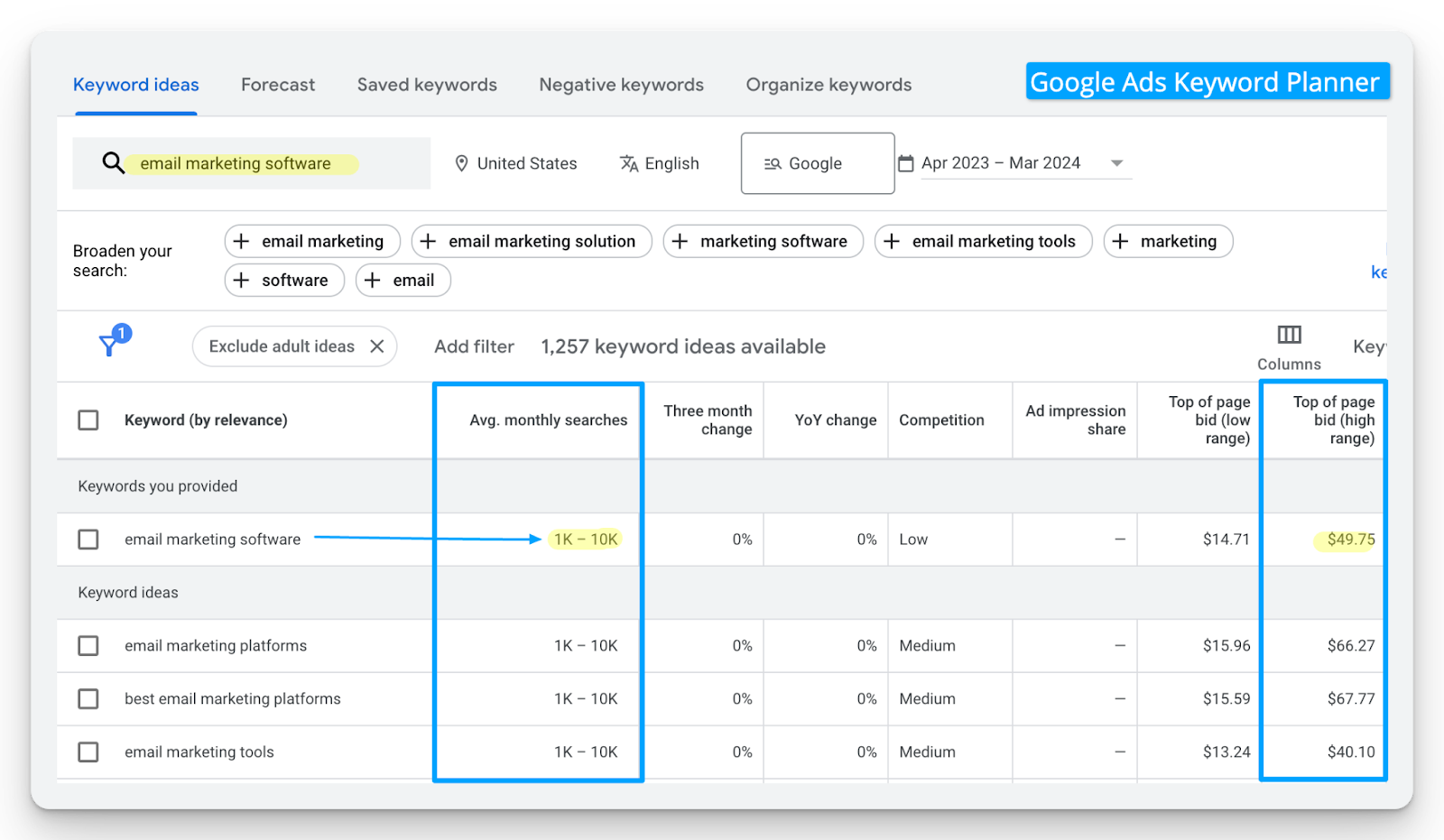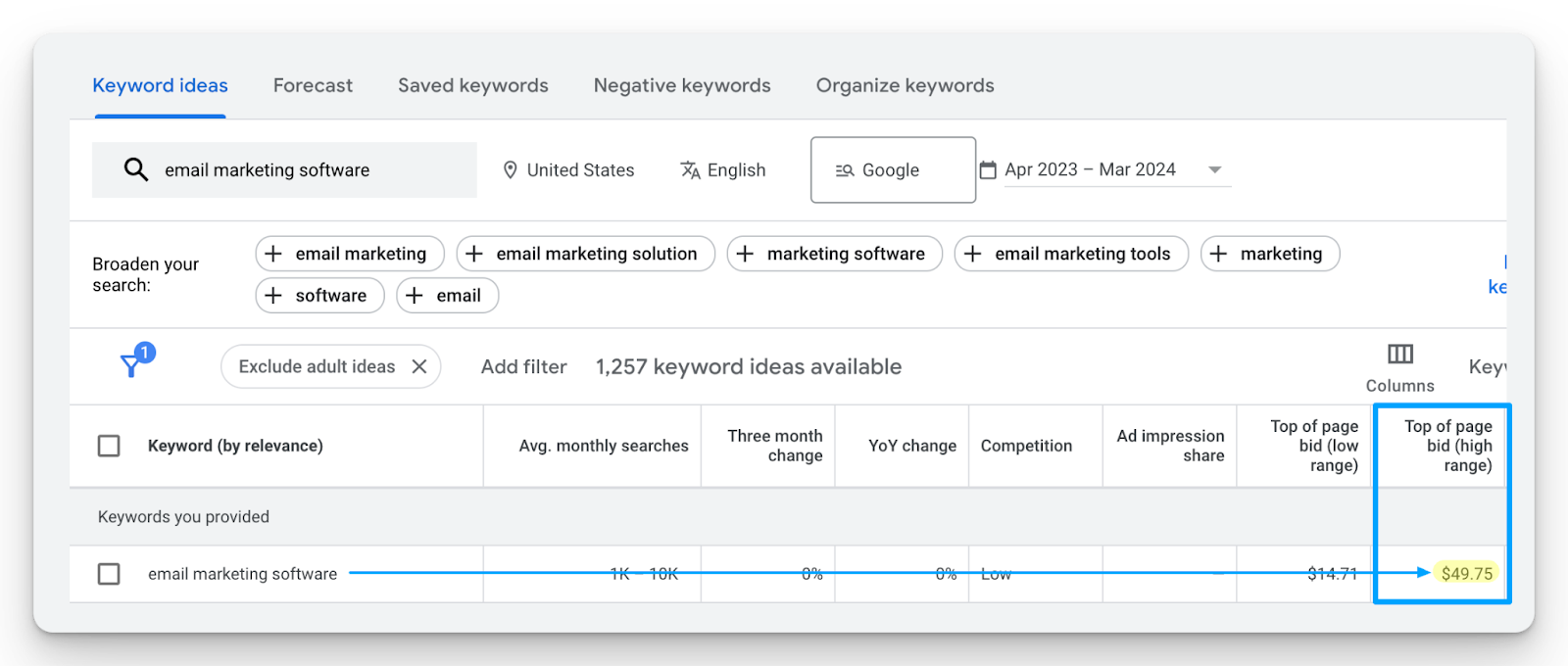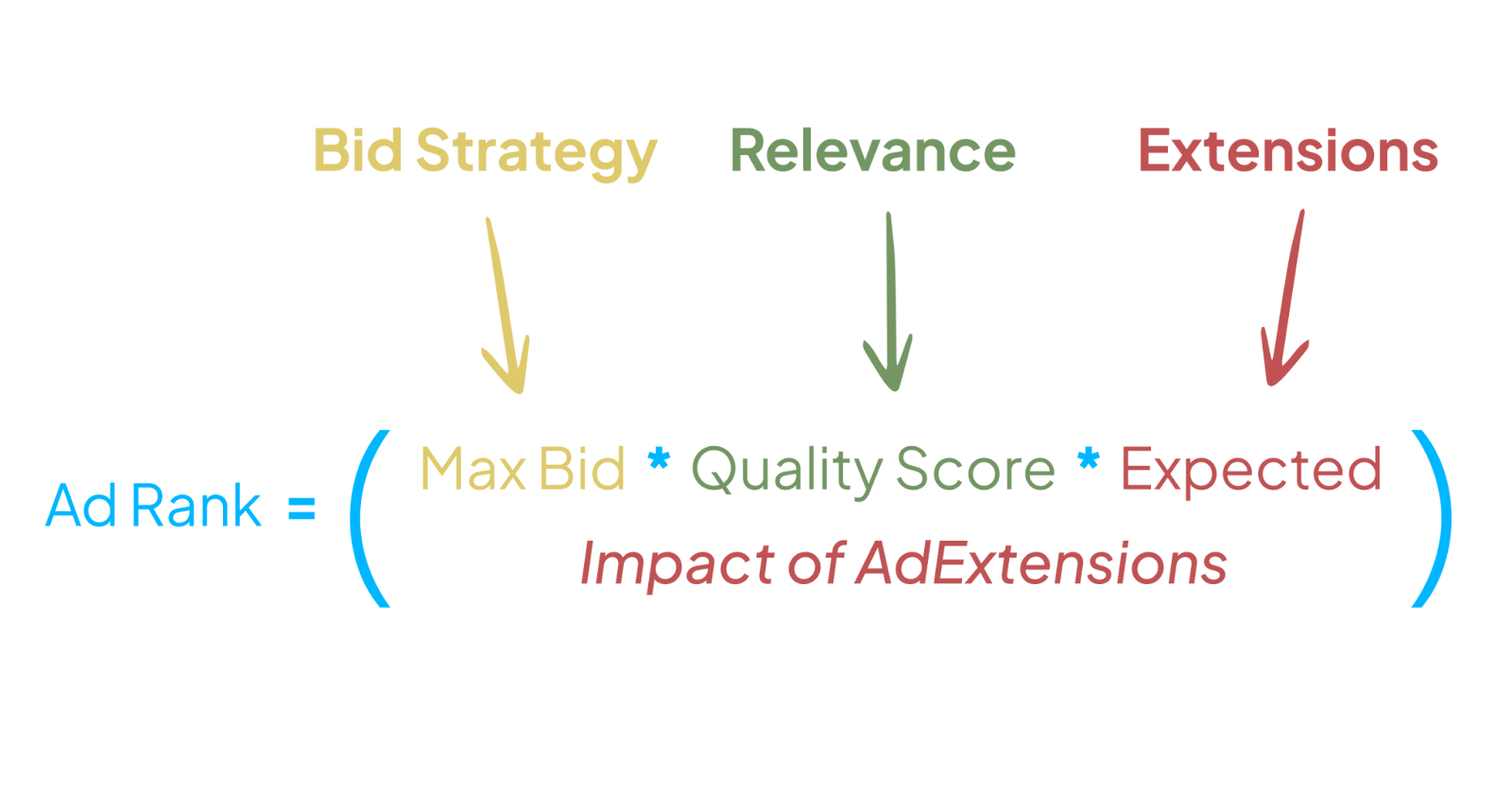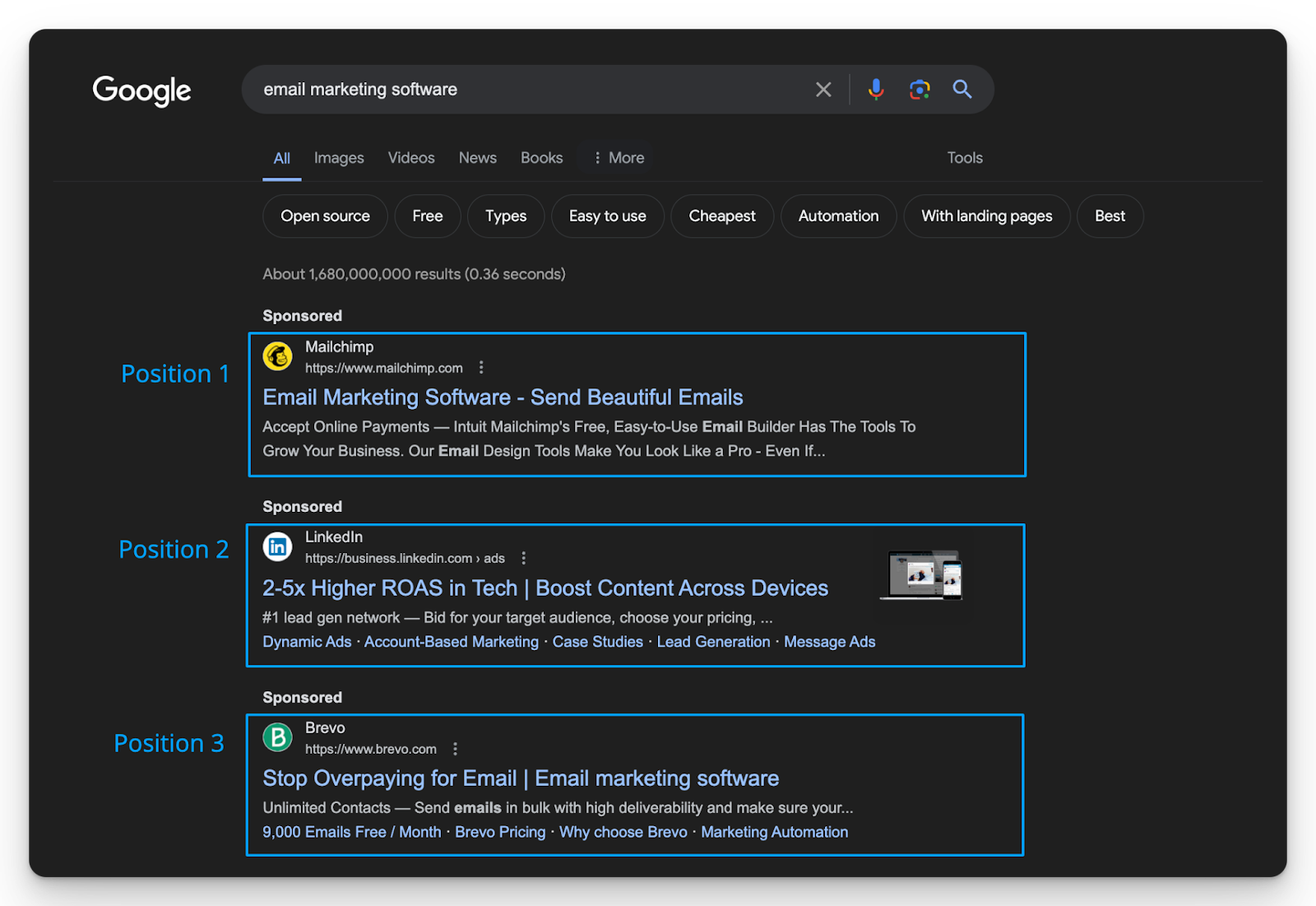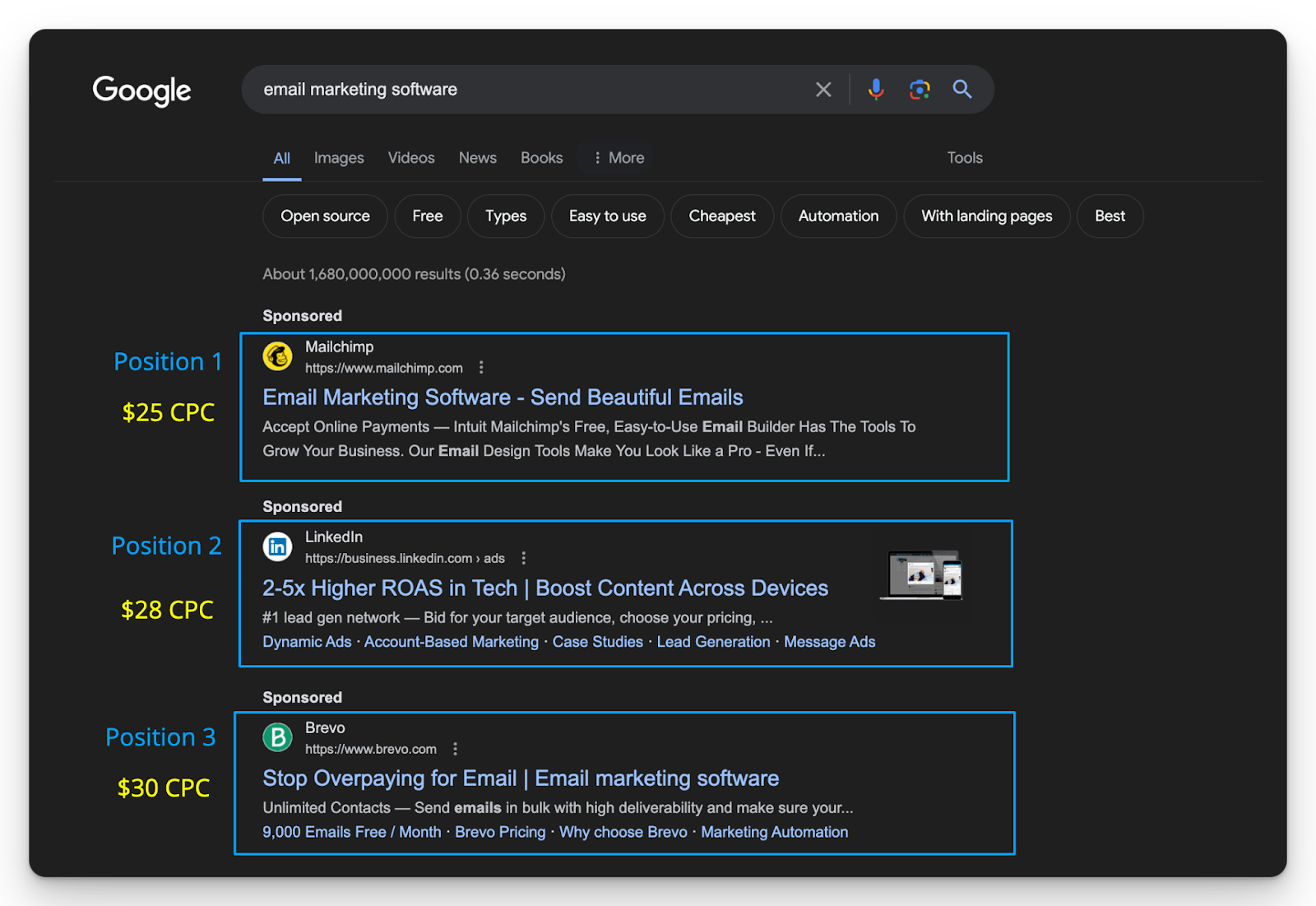
10 Tips You Need to Know Before Hiring Your Next Ad Agency or Consultant
Working with an advertising agency, freelancer, or consultant?
After the past 12 years working in-house I know what good and bad looks like.
In this article I’m going to share with you my hard lessons learned on working with these partners.
And if you’re an agency owner, freelancer, or consultant reading this (take notes!) 📝
These tips are bucketed into four parts: people, product, process, and results.
Let’s dive in!
TABLE OF CONTENTS:
- Tip #1: Be clear on your communication needs and expectations
- Tip #2: Decide your meeting cadence
- Tip #3: Get clear on who and what for your tools
- Tip #4: Review your brand foundations
- Tip #5: Make sure your extended team knows the audience targeting
- Tip #6: Define your operational plumbing
- Tip #7: Share your historical benchmarks
- Tip #8: Be clear on your naming conventions
- Tip #9: Have clear trackable goals
- Tip #10: Set clear timelines and deliverables
[process] Tip #1: Be clear on your communication needs and expectations
You have to be upfront about this from the beginning.
Where and how often are the two key questions here:
- Where will we be communicating? (ex: Slack)
- How soon should you expect a response? (ex: within 24 hours)
- How fast can I expect a certain task to be completed? (ex: 72 hours)
You need to tell your partners what you expect from them in terms of communication.
Steal this template:
“Hey {Name}, I want to be really clear that with the agencies I work with I expect a response from my slack or emails within {timeframe, ex: 12 business hours}”.
This is equally as important for those of us managing clients as it allows you to more effectively prioritize your communications with clients and triage your day.
[process] Tip #2: Decide your meeting cadence
This tip connects with the previous around framing expectations.
You have to get clear on how often you’re going to be meeting, is it weekly, bi-Weekly, monthly?
Communicate your expectations on how often you’ll meet and the options available.
By getting clear on your needs and how fast you want to get things done will allow you to answer this.
The best part about defined meeting cadences is that it allows you to hold people accountable.
It’s a forcing function that makes sure you’re getting what you need fast enough.
My preferred meeting cadence:
Weekly for the first six weeks to build trust and create momentum then move towards bi-weekly.
Within the first 6-weeks of working with a new agency or consultant you’ll want to ensure they are set up with:
- Systems access
- Clearly defined goals
- Clarity on your ICP and audience
From here everything is addressed and you can move to a bi-weekly cadence.
Again this is my personal preference align according to your needs!
If you want some tips on how to run an effective meeting check out my LinkedIn post 🎉
[process] Tip #3: Get clear on who and what for your tools
The last thing you want is for it to take four weeks for your agency to get plugged into your system.
Get your new partners access to your systems as fast as possible so they can begin adding value.
Build a document with a clear list of all the primary tools they’ll need access for and who to contact.
If the agency, consultant, or freelancer you’re onboarding already has clear documentation already on how you can provide them access to their primary tools this is a green flag! 🟢
If you can take the initiative to build an internal version of this document even better.
You know your marketing operations person's name, make sure they know as well.
The more people working together across teams the more important this becomes.
[product] Tip #4: Review your brand foundations
Make sure your agency, freelancer, or consultant understands your brand.
Your brand foundations consists of:
- What does your solution do?
- What’s your unique value prop?
- What’s your origin story?
- Who are your competitors?
- What’s your tone of voice?
Even better if your partners can sit in on a live demo (or at the minimum watch a recording).
If your partners don’t get sold on the unique value you provide they will never be able to make an impact with the campaigns they create for you (and red flag if they don’t want to know! 🔴).
[product] Tip #5: Make sure your extended team knows the audience targeting
We touched on this on tip #4 but this is so important it deserves its own tip.
Audience targeting is the foundation of everything you’re going to be doing.
You need to be absolutely clear on:
- Job titles
- Job functions
- Company size
- Industries
Really, really, really hone in on this! 🙏
Make sure your extended teams knows this as well.
This is where your buyer persona comes into play, if you need help on how to craft one check out Module 2 of my B2B Advertising Foundations course where I show you how to piece it together.
Give them as much customer information as possible because they have to know this.
They need to know what good vs bad leads look like.
Pro tip:
Keep all this customer information in a shared document so your partners can refer back to it in the future when needed and setup a shared channel to monitor lead quality 🔥

[process] Tip #6: Define your operational plumbing
You need to be specific on how things should be tracked.
The goal isn’t to just drive leads, it’s to scale legit qualified pipeline and revenue.
Work with your extended teams to map out your customer lifecycle operations.
For example, they should be clear on:
- Once someone fills out a form, now what?
- How are leads being handed off to sales?
- How is the team being notified on new leads?
- How are they being followed up with?
From here it’s piecing together the right UTM conventions for measurement, connecting forms in our marketing automation tools so be able to route appropriately.
Walk through all of these steps and the points in-between so things are tracked.
Take my word for it, defining this will save you a lot of headaches at the end of the quarter! 😅
[results] Tip #7: Share your historical benchmarks
You need to first understand your historical benchmarks so you can share them.
Reverse engineer your funnel to understand your performance between steps.
This will look different for every company but here’s an example for sales led:
- Meetings Booked
- Meetings Completed
- Opportunities
- Pipeline
- Revenue
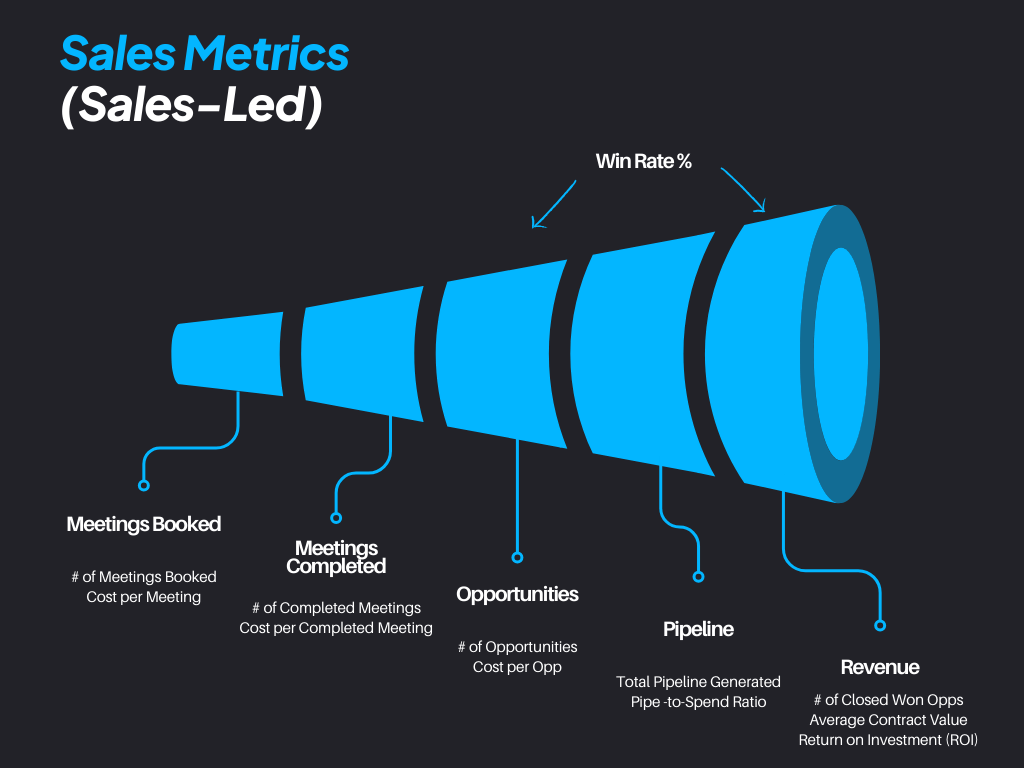
Knowing the difference between steps is crucial to improve efficiency.
If your agency or consultant isn’t trying to reverse engineer your funnel that’s a red flag! 🔴
Share these historical benchmarks and hold them accountable.
[Process] Tip #8: Be clear on your naming conventions
Your partners need to be able to jump inside your ad accounts and understand what’s happening.
The first step is making sure they are informed on your naming conventions.
Align on naming conventions for:
- Forms
- Campaigns
- Creatives
And if you’re reading this and don’t have existing naming conventions, ask yourself:
What are the questions I’d like to answer from my campaigns?
For example, I want to know:
- What’s my performance by region?
- What’s my performance by campaign objective?
- What’s my performance by ad?
Then use these answers to include them in your naming convention.
This is a really small in the weeds tactical step but worth sharing.
[results] Tip #9: Have clear trackable goals
Determine the metrics that matter that your advertising partners should track and the frequency in which they should be reporting on these goals to you.
I personally like to report on these weekly to make sure everything is pacing appropriately.
This also allows you to pivot quickly when things start to go off track.
When determining the metrics that matter, also brainstorm your leading indicators.
Leading indicators are clear metrics that help you determine early signs of success.
For example, depending on your campaigns objective it might look a bit different:
- Lead gen = qualified leads created
- Awareness = engagement rate by ad type
Just choose something that can happen quickly within the first 7 days of a campaign going live and is a relevant milestone that will ultimately lead to your end goal.
🟢 An early and specific goal is better than no goal at all.
Without this clarity you or your partners won’t be able to prioritize what needs to be done.
If you’re struggling with deciding on your goals go back to tip #7 and understand your benchmarks.
[results] Tip #10: Set clear timelines and deliverables
Defining the success metrics that matter and the roadmap to get there is CRUCIAL.
You have to be clear upfront timelines for both parties or it’s going to get squirrely 🐿😅
If it’s not defined upfront as you go things will go sideways.
Communicate to your agency, consultant, or freelancer:
Here’s what we expect from month 1, 2, and so on…
You’re hiring these experts to come in and solve a specific problem.
The goal is to hold your partner accountable to the outcome and not tasks.
This keeps you focused on the things that matter (ex: funnel optimization, benchmarks, goals).
I hope you found these 10 tips helpful and the best of luck in your future partnerships! ♥️
Connect with me on LinkedIn, and let’s keep the conversation going.
You can also visit my website here for more valuable content.
Jumpstart Your B2B Marketing Career

If you’re serious about mastering B2B advertising, then you definitely need to check out my free course that will teach you the foundational knowledge to becoming a high-performing B2B marketer who knows how to use advertising to drive legit business and revenue impact without the fluff or wasting your time and money learning the ropes the hard way.
- Module 1: you’ll get a crash course in the B2Bverse and master terminology, sales processes, and working across teams.
- Module 2: you’ll learn how to become your customer's psychologist and understand them deeply with buyer personas that allow you to craft effective messaging.
- Module 3: you’ll master the B2B funnel and learn how to think like a CEO to identify performance bottlenecks and convert more leads into revenue.
- Module 4: you’ll learn how to put it all together and build your go-to-market strategy that gets your ad in front of your dream buyers and converts attention.
This course was designed with absolute beginners in mind.
Accelerate your learning curve and start the course today for free.
People Also Ask
What should I look for when evaluating a digital marketing agency’s or freelancer’s portfolio?
Look for case studies or examples of work relevant to your industry or goals. Examine metrics like ROI, lead generation, or brand awareness improvements. Ensure their style and results align with your business objectives.
How can I assess the expertise of a digital marketing agency or freelancer before hiring?
Ask about their certifications (e.g., Google Ads, HubSpot), years of experience, and client testimonials. Request examples of campaigns they’ve worked on and inquire about their understanding of your niche.
What key questions should I ask during the discovery call with a potential agency or freelancer?
• Questions might include:
• What industries have you worked with?
• How do you approach campaign strategy?
• What KPIs do you typically focus on?
• How often will we receive updates or reports?
How can I ensure smooth communication and collaboration with a marketing agency or freelancer?
Establish clear communication channels (e.g., Slack, email) and agree on response times. Schedule regular check-ins or status meetings to align on progress and adjust strategies as needed.
What are red flags to watch out for when hiring an agency or freelancer?
Be cautious if they guarantee immediate results, avoid sharing clear metrics, or lack transparency about pricing or deliverables. A reputable partner will provide realistic expectations and detailed proposals.
Should I choose an agency or freelancer for my marketing needs?
Agencies offer a team with diverse expertise, while freelancers may provide more personalized attention. Choose based on your budget, the complexity of your campaigns, and the need for specific skills.
How can I track the ROI of hiring a digital marketing agency or freelancer?
Set clear goals and KPIs upfront, such as lead volume, cost per lead, or revenue growth. Use analytics tools to monitor campaign performance and schedule regular reviews with your partner to evaluate progress.

Heading 1
Heading 2
Heading 3
Heading 4
Heading 5
Heading 6
Lorem ipsum dolor sit amet, consectetur adipiscing elit, sed do eiusmod tempor incididunt ut labore et dolore magna aliqua. Ut enim ad minim veniam, quis nostrud exercitation ullamco laboris nisi ut aliquip ex ea commodo consequat. Duis aute irure dolor in reprehenderit in voluptate velit esse cillum dolore eu fugiat nulla pariatur.
Block quote
Ordered list
- Item 1
- Item 2
- Item 3
Unordered list
- Item A
- Item B
- Item C
Bold text
Emphasis
Superscript
Subscript


Heading
Heading 1
Heading 2
Heading 3
Heading 4
Heading 5
Heading 6
Lorem ipsum dolor sit amet, consectetur adipiscing elit, sed do eiusmod tempor incididunt ut labore et dolore magna aliqua. Ut enim ad minim veniam, quis nostrud exercitation ullamco laboris nisi ut aliquip ex ea commodo consequat. Duis aute irure dolor in reprehenderit in voluptate velit esse cillum dolore eu fugiat nulla pariatur.
Block quote
Ordered list
- Item 1
- Item 2
- Item 3
Unordered list
- Item A
- Item B
- Item C
Bold text
Emphasis
Superscript
Subscript


Heading
Heading 1
Heading 2
Heading 3
Heading 4
Heading 5
Heading 6
Lorem ipsum dolor sit amet, consectetur adipiscing elit, sed do eiusmod tempor incididunt ut labore et dolore magna aliqua. Ut enim ad minim veniam, quis nostrud exercitation ullamco laboris nisi ut aliquip ex ea commodo consequat. Duis aute irure dolor in reprehenderit in voluptate velit esse cillum dolore eu fugiat nulla pariatur.
Block quote
Ordered list
- Item 1
- Item 2
- Item 3
Unordered list
- Item A
- Item B
- Item C
Bold text
Emphasis
Superscript
Subscript


Heading
Heading 1
Heading 2
Heading 3
Heading 4
Heading 5
Heading 6
Lorem ipsum dolor sit amet, consectetur adipiscing elit, sed do eiusmod tempor incididunt ut labore et dolore magna aliqua. Ut enim ad minim veniam, quis nostrud exercitation ullamco laboris nisi ut aliquip ex ea commodo consequat. Duis aute irure dolor in reprehenderit in voluptate velit esse cillum dolore eu fugiat nulla pariatur.
Block quote
Ordered list
- Item 1
- Item 2
- Item 3
Unordered list
- Item A
- Item B
- Item C
Bold text
Emphasis
Superscript
Subscript


Heading
Heading 1
Heading 2
Heading 3
Heading 4
Heading 5
Heading 6
Lorem ipsum dolor sit amet, consectetur adipiscing elit, sed do eiusmod tempor incididunt ut labore et dolore magna aliqua. Ut enim ad minim veniam, quis nostrud exercitation ullamco laboris nisi ut aliquip ex ea commodo consequat. Duis aute irure dolor in reprehenderit in voluptate velit esse cillum dolore eu fugiat nulla pariatur.
Block quote
Ordered list
- Item 1
- Item 2
- Item 3
Unordered list
- Item A
- Item B
- Item C
Bold text
Emphasis
Superscript
Subscript


Heading
Heading 1
Heading 2
Heading 3
Heading 4
Heading 5
Heading 6
Lorem ipsum dolor sit amet, consectetur adipiscing elit, sed do eiusmod tempor incididunt ut labore et dolore magna aliqua. Ut enim ad minim veniam, quis nostrud exercitation ullamco laboris nisi ut aliquip ex ea commodo consequat. Duis aute irure dolor in reprehenderit in voluptate velit esse cillum dolore eu fugiat nulla pariatur.
Block quote
Ordered list
- Item 1
- Item 2
- Item 3
Unordered list
- Item A
- Item B
- Item C
Bold text
Emphasis
Superscript
Subscript


Heading
Heading 1
Heading 2
Heading 3
Heading 4
Heading 5
Heading 6
Lorem ipsum dolor sit amet, consectetur adipiscing elit, sed do eiusmod tempor incididunt ut labore et dolore magna aliqua. Ut enim ad minim veniam, quis nostrud exercitation ullamco laboris nisi ut aliquip ex ea commodo consequat. Duis aute irure dolor in reprehenderit in voluptate velit esse cillum dolore eu fugiat nulla pariatur.
Block quote
Ordered list
- Item 1
- Item 2
- Item 3
Unordered list
- Item A
- Item B
- Item C
Bold text
Emphasis
Superscript
Subscript


Heading
Heading 1
Heading 2
Heading 3
Heading 4
Heading 5
Heading 6
Lorem ipsum dolor sit amet, consectetur adipiscing elit, sed do eiusmod tempor incididunt ut labore et dolore magna aliqua. Ut enim ad minim veniam, quis nostrud exercitation ullamco laboris nisi ut aliquip ex ea commodo consequat. Duis aute irure dolor in reprehenderit in voluptate velit esse cillum dolore eu fugiat nulla pariatur.
Block quote
Ordered list
- Item 1
- Item 2
- Item 3
Unordered list
- Item A
- Item B
- Item C
Bold text
Emphasis
Superscript
Subscript


Heading
Heading 1
Heading 2
Heading 3
Heading 4
Heading 5
Heading 6
Lorem ipsum dolor sit amet, consectetur adipiscing elit, sed do eiusmod tempor incididunt ut labore et dolore magna aliqua. Ut enim ad minim veniam, quis nostrud exercitation ullamco laboris nisi ut aliquip ex ea commodo consequat. Duis aute irure dolor in reprehenderit in voluptate velit esse cillum dolore eu fugiat nulla pariatur.
Block quote
Ordered list
- Item 1
- Item 2
- Item 3
Unordered list
- Item A
- Item B
- Item C
Bold text
Emphasis
Superscript
Subscript


Heading
Heading 1
Heading 2
Heading 3
Heading 4
Heading 5
Heading 6
Lorem ipsum dolor sit amet, consectetur adipiscing elit, sed do eiusmod tempor incididunt ut labore et dolore magna aliqua. Ut enim ad minim veniam, quis nostrud exercitation ullamco laboris nisi ut aliquip ex ea commodo consequat. Duis aute irure dolor in reprehenderit in voluptate velit esse cillum dolore eu fugiat nulla pariatur.
Block quote
Ordered list
- Item 1
- Item 2
- Item 3
Unordered list
- Item A
- Item B
- Item C
Bold text
Emphasis
Superscript
Subscript


Heading
Heading 1
Heading 2
Heading 3
Heading 4
Heading 5
Heading 6
Lorem ipsum dolor sit amet, consectetur adipiscing elit, sed do eiusmod tempor incididunt ut labore et dolore magna aliqua. Ut enim ad minim veniam, quis nostrud exercitation ullamco laboris nisi ut aliquip ex ea commodo consequat. Duis aute irure dolor in reprehenderit in voluptate velit esse cillum dolore eu fugiat nulla pariatur.
Block quote
Ordered list
- Item 1
- Item 2
- Item 3
Unordered list
- Item A
- Item B
- Item C
Bold text
Emphasis
Superscript
Subscript


Heading
Heading 1
Heading 2
Heading 3
Heading 4
Heading 5
Heading 6
Lorem ipsum dolor sit amet, consectetur adipiscing elit, sed do eiusmod tempor incididunt ut labore et dolore magna aliqua. Ut enim ad minim veniam, quis nostrud exercitation ullamco laboris nisi ut aliquip ex ea commodo consequat. Duis aute irure dolor in reprehenderit in voluptate velit esse cillum dolore eu fugiat nulla pariatur.
Block quote
Ordered list
- Item 1
- Item 2
- Item 3
Unordered list
- Item A
- Item B
- Item C
Bold text
Emphasis
Superscript
Subscript


Heading
Heading 1
Heading 2
Heading 3
Heading 4
Heading 5
Heading 6
Lorem ipsum dolor sit amet, consectetur adipiscing elit, sed do eiusmod tempor incididunt ut labore et dolore magna aliqua. Ut enim ad minim veniam, quis nostrud exercitation ullamco laboris nisi ut aliquip ex ea commodo consequat. Duis aute irure dolor in reprehenderit in voluptate velit esse cillum dolore eu fugiat nulla pariatur.
Block quote
Ordered list
- Item 1
- Item 2
- Item 3
Unordered list
- Item A
- Item B
- Item C
Bold text
Emphasis
Superscript
Subscript


Heading
Heading 1
Heading 2
Heading 3
Heading 4
Heading 5
Heading 6
Lorem ipsum dolor sit amet, consectetur adipiscing elit, sed do eiusmod tempor incididunt ut labore et dolore magna aliqua. Ut enim ad minim veniam, quis nostrud exercitation ullamco laboris nisi ut aliquip ex ea commodo consequat. Duis aute irure dolor in reprehenderit in voluptate velit esse cillum dolore eu fugiat nulla pariatur.
Block quote
Ordered list
- Item 1
- Item 2
- Item 3
Unordered list
- Item A
- Item B
- Item C
Bold text
Emphasis
Superscript
Subscript


Heading
Heading 1
Heading 2
Heading 3
Heading 4
Heading 5
Heading 6
Lorem ipsum dolor sit amet, consectetur adipiscing elit, sed do eiusmod tempor incididunt ut labore et dolore magna aliqua. Ut enim ad minim veniam, quis nostrud exercitation ullamco laboris nisi ut aliquip ex ea commodo consequat. Duis aute irure dolor in reprehenderit in voluptate velit esse cillum dolore eu fugiat nulla pariatur.
Block quote
Ordered list
- Item 1
- Item 2
- Item 3
Unordered list
- Item A
- Item B
- Item C
Bold text
Emphasis
Superscript
Subscript


Heading
Heading 1
Heading 2
Heading 3
Heading 4
Heading 5
Heading 6
Lorem ipsum dolor sit amet, consectetur adipiscing elit, sed do eiusmod tempor incididunt ut labore et dolore magna aliqua. Ut enim ad minim veniam, quis nostrud exercitation ullamco laboris nisi ut aliquip ex ea commodo consequat. Duis aute irure dolor in reprehenderit in voluptate velit esse cillum dolore eu fugiat nulla pariatur.
Block quote
Ordered list
- Item 1
- Item 2
- Item 3
Unordered list
- Item A
- Item B
- Item C
Bold text
Emphasis
Superscript
Subscript


Heading
Heading 1
Heading 2
Heading 3
Heading 4
Heading 5
Heading 6
Lorem ipsum dolor sit amet, consectetur adipiscing elit, sed do eiusmod tempor incididunt ut labore et dolore magna aliqua. Ut enim ad minim veniam, quis nostrud exercitation ullamco laboris nisi ut aliquip ex ea commodo consequat. Duis aute irure dolor in reprehenderit in voluptate velit esse cillum dolore eu fugiat nulla pariatur.
Block quote
Ordered list
- Item 1
- Item 2
- Item 3
Unordered list
- Item A
- Item B
- Item C
Bold text
Emphasis
Superscript
Subscript


Heading
Heading 1
Heading 2
Heading 3
Heading 4
Heading 5
Heading 6
Lorem ipsum dolor sit amet, consectetur adipiscing elit, sed do eiusmod tempor incididunt ut labore et dolore magna aliqua. Ut enim ad minim veniam, quis nostrud exercitation ullamco laboris nisi ut aliquip ex ea commodo consequat. Duis aute irure dolor in reprehenderit in voluptate velit esse cillum dolore eu fugiat nulla pariatur.
Block quote
Ordered list
- Item 1
- Item 2
- Item 3
Unordered list
- Item A
- Item B
- Item C
Bold text
Emphasis
Superscript
Subscript


Heading
Heading 1
Heading 2
Heading 3
Heading 4
Heading 5
Heading 6
Lorem ipsum dolor sit amet, consectetur adipiscing elit, sed do eiusmod tempor incididunt ut labore et dolore magna aliqua. Ut enim ad minim veniam, quis nostrud exercitation ullamco laboris nisi ut aliquip ex ea commodo consequat. Duis aute irure dolor in reprehenderit in voluptate velit esse cillum dolore eu fugiat nulla pariatur.
Block quote
Ordered list
- Item 1
- Item 2
- Item 3
Unordered list
- Item A
- Item B
- Item C
Bold text
Emphasis
Superscript
Subscript


Heading
Heading 1
Heading 2
Heading 3
Heading 4
Heading 5
Heading 6
Lorem ipsum dolor sit amet, consectetur adipiscing elit, sed do eiusmod tempor incididunt ut labore et dolore magna aliqua. Ut enim ad minim veniam, quis nostrud exercitation ullamco laboris nisi ut aliquip ex ea commodo consequat. Duis aute irure dolor in reprehenderit in voluptate velit esse cillum dolore eu fugiat nulla pariatur.
Block quote
Ordered list
- Item 1
- Item 2
- Item 3
Unordered list
- Item A
- Item B
- Item C
Bold text
Emphasis
Superscript
Subscript


Heading
Other Articles You May Enjoy.

B2B Advertising in 2024: The Definitive Guide
Today I’m going to give you a crash course in B2B advertising.
In this comprehensive guide I’ll cover:
- What is B2B advertising?
- 7 ways B2B differs from B2C
- 20 B2B Terms and Metrics you need to know
- Top 3 B2B Revenue Models
- B2B ad examples by revenue model
- How to create a B2B advertising strategy
- The Five Stages Model
- The Best B2B Ad Channels
- Advice from 20 B2B Advertising Experts
So if you need to get up-to-speed on B2B as quickly as possible, you’ll love this guide.
Let’s get started 🔥
What Is Business-to-Business Advertising?
B2B advertising is the process of any paid marketing efforts directed toward influencing multiple individuals within a company for a purchase decision (known as a buying committee) vs a single consumer.
7 Differences between B2B and B2C Advertising:
- Longer sales cycles (3 - 36 months)
- Larger average deal sizes (< $1,000 - $250,000+)
- More stakeholders involved in the purchase decision (ex: c-suite, finance)
- Focus on impacting the entire buyer's journey not just the first conversion (unlike B2C).
- Smaller audiences (< 300,000) with a focus on reaching the right person and company vs B2C with broad audiences ( > 300,000) as more people can purchase your product.
- B2B requires strategic alignment between marketing and sales as you’re joining forces (inbound and outbound) to win accounts.
- B2B supports multiple revenue models, the big three being; product-led, sales-led, and hybrid. Whereas e-commerce is solely product-led.
Check out more examples in the article: B2B vs B2C Advertising: 8 Differences & Examples You Need To Know.
20 B2B Terms and Metrics you Need to Know
One of the first things you realize when you get into B2B is how much jargon there is! MQL, SQL, ACV, ARR, and the list goes on!
In order to make sure you understand the language, here’s 20 B2B terms and metrics you need to know:
Unfortunately there are many more terms you’ll need throughout your B2B career 😂 and every company creates their own (it’s a constant struggle) but these 20 will give you a solid foundation. For a great list of b2b terms check out our B2B Advertising Glossary.
Top 3 B2B Revenue Models
If you’re working in B2B there are three common revenue models you’ll likely work with.
If your job is to promote this organization, understanding the revenue model is key as it will change everything from how you approach your strategy, the offers you choose, channels, and more.

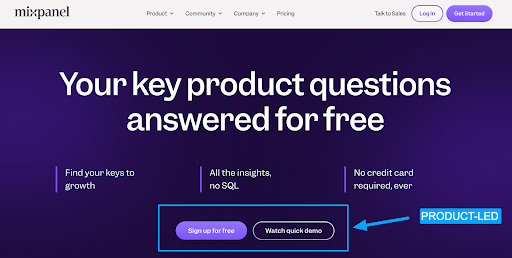

B2B Ad Examples by Revenue Model:
Sales Led
Product Led
How to build a full-funnel B2B Advertising Strategy
Now that you know how B2B differs from B2C.
How do you build a full-funnel B2B advertising strategy?
Full-funnel refers to building a strategy that covers all touch points along the customer journey.
This means advertising to individuals who are (e.g. Eugene's Schwartz Stages of Awareness):
- Unaware = have no clue they even have a problem in the first place (ex: blissfully mismanaging customer relationships)
- Problem Aware = know they have a problem but are not sure how to solve it (ex: realize managing customer relationships is important but don't know how).
- Solution Aware = need help deciding on the right solution (ex: should I use Google Sheets, a filing cabinet 😂 or a CRM?).
- Product Aware = know of your brand/product but not sure if you're the best option (ex: comparing CRM software; Salesforce vs HubSpot vs Pipedrive).
- Offer Aware = know of your brand and exactly how you can help but need some nudging (ex: pricing discounts, better contract terms, customer references).
- Most Aware = Existing customers, familiar with your brand and working with you (ex: referral program).
Understanding your prospects' stage of awareness allows you to create messaging, and offers that better resonate with where they are in the customer journey.
It helps to have a model (think of it like a map) to make complicated topics simple.
We’re going to use The Five Stages model covered in our course Building a Paid Media Program.
Here’s how it works:
Based on the stage; the outcome, awareness level, offers, tactics, and KPIs differ.
- Outcome = the end goal you're trying to achieve in each stage.
- Awareness = the familiarity level of your brand/product/solution.
- Offers = what you're providing your target audience in each stage.
- Tactics = how you're going to actually execute your strategy per stage.
- KPIs = how you're going to measure success in each stage.
Let's dive into examples for each stage so you really understand!
The Five Stages Model
Stage 1: Create
Stage 2: Capture
Stage 3: Accelerate (Sales Led) / Activate (Product Led)
Stage 4: Revive
Stage 5: Expand
The Five Stages model allows you to plan across all the lifecycle stages past initial conversion.
Ultimately no one knows for certain where someone is in their buyer's journey and everyone moves through it at different speeds. Use your best judgment.
If you're confused on which stage someone would be, remember the target audience's level of awareness dictates the stage they fall under.
Which stage should you invest in?
Generally speaking if you want to maximize ROI in the short-term you should work from the bottom of the Five Stages and move towards the top (Expand → Create).
You don't have to build a full-funnel strategy at once, take it one stage at a time.
Putting The Five Stages into practice
- Decide on which stage you want to focus on based on the outcome you’re after. If you have a smaller budget (ex: < $5,000/month) focus exclusively on one stage first.
- Once you’ve decided on the stage fill in your budget, and leading + lagging KPIs. If you’re unsure of what KPIs to select refer to Module 5- Lesson 1 of Building a Paid Media Program.
- Next decide on which channels you’ll advertise on to reach individuals in this stage and how you’ll target them and exclude the wrong audience. If you’re unsure of what channels to advertise on, refer to Choosing the BEST channels.
- Finally decide on what offers you’re going to promote in these channels for this stage (the offers listed above are only examples to give you ideas).
- If you’re targeting multiple stages repeat steps 1-4 for each.
Click here to become an AdConversion student and get free access to The Five Stages planning template in Module 2 - Lesson 1 where we cover how to build your paid media strategy in depth.

After you’ve filled in The Five Stages planning template you now have your strategy in place and can easily move into execution and start assembling your campaigns, creatives, and messaging.
What are the BEST B2B advertising channels?
The obvious answer is where your audience hangs out online!
But not all channels are equal, some are more effective at certain stages.
Most channels can be grouped into these 5 primary categories ↓
How to decide on the best channel?
There's four key criteria to consider when deciding on a channel:
- Targeting options
- Media cost
- Reach
- Policy
Let's dive into each ↓
If the channel you’re considering meets all four of these criteria then you should consider running a test campaign for $100 to get your real average CPC & CPM.
Recommended Channels by Stage
Based on my experience these channels work best for each stage:
(Use this as inspiration not restriction)
Let this be a guide to help you get started, take what serves you and abandon the rest.
Test what works for you until proven otherwise.
Advice from 20 B2B advertising experts
One of the best parts about being in B2B is the quality of marketers in this space.
We asked 20 B2B advertising experts:
What’s 1 tip you’d share with new marketers getting into B2B advertising?

50+ Ad Specs for The Top 10 Ad Platforms
Have you ever wondered what dimensions does that ad require? 🤔
Then started searching to find the answer? (same here lol)
To save you (and ourselves) trouble, we gathered the most popular ad specs across 10 channels in one place:
- Google Display Ad Specs
- LinkedIn Ad Specs
- Twitter (X) Ad Specs
- Quora Ad Specs
- Reddit Ad Specs
- YouTube Ad Specs
- Google Discovery / Demand Gen Ad Specs
- TikTok Ad Specs
- Meta Ad Specs
⭐️ Bookmark this article and refer back to it when you need ad specs.
Google Display Ad Specs
Source: support.google.com
Browse examples at adstransparency.google.com
LinkedIn Ad Specs
Source: business.linkedin.com
Browse examples at: linkedin.com/ad-library/home
X (Twitter) Ad Specs
Source: business.twitter.com
- You can request to have video lengths increased up to 10 minutes
- Carousel can use images or videos but must be in the same aspect ratio (ex: 1:1 or 16:9)
Quora Ad Specs
Source: image ads, video ads
Reddit Ad Specs
Source: reddit.my.site.com
* Headlines will be truncated to 100 characters on mobile/mobile web for the conversation placement.
Youtube Ad Specs
Source: support.google.com
Browse examples at adstransparency.google.com
Google Discovery / Demand Gen Ad Specs
Source: support.google.com
Browse examples at adstransparency.google.com
TikTok Ad Specs
Source: ads.tiktok.com
Browse examples at library.tiktok.com/ads
Meta Ad Specs (Facebook/Instagram)
Source: business.facebook.com
Browse examples at: www.facebook.com/ads/library
Resources for Mastering B2B Advertising
Hope you found this ad specs article useful!
If you’re serious about mastering B2B advertising then you definitely need to join 1,000+ B2B marketers leveling up their paid advertising skill sets in AdConversion.
Here’s 4 reasons why you should consider joining. Every one of our on-demand courses are:
✅ 100% free access.
✅ Taught by vetted industry experts.
✅ Have workbooks, resources, and templates.
✅ Less than 10 minutes per lesson.
We believe every marketer should know how to scale paid ads so they can:
• Scale their ideas
• Level up their careers
• Make a positive impact
Click Here to Join 1,000+ B2B Marketers Today and start leveling up your advertising skill set.
Takes < 90 seconds to sign up (seriously I timed it 😂)
People Also Ask
How often do ad platforms update their ad specifications, and how can I stay informed about these changes?
Ad platforms periodically update their ad specs to accommodate new features or policies. To stay informed, regularly check the official guidelines of each platform and subscribe to their newsletters or blogs for updates.
What are the common pitfalls to avoid when designing ads to meet platform specifications?
Common pitfalls include using incorrect dimensions, exceeding file size limits, and neglecting safe zones, which can lead to ad disapproval or poor display. Always adhere to the latest specifications and test your ads across devices.
How can I ensure that my ad creatives are optimized for both desktop and mobile viewing?
Design responsive ads that adapt to various screen sizes. Utilize platform-specific preview tools to see how your ads render on different devices, ensuring readability and visual appeal across all formats.
Are there tools available to streamline the creation of ad creatives that comply with multiple platform specifications?
Yes, tools like Canva, Adobe Creative Cloud, and Figma offer templates tailored to various platform specs, simplifying the design process and ensuring compliance.
How do ad specifications impact the performance and effectiveness of my advertising campaigns?
Adhering to specifications ensures that your ads display correctly, preventing issues like cropping or distortion. Properly formatted ads enhance user experience, leading to better engagement and higher conversion rates.

3 Powerful Strategies For Scaling SaaS Google Ads You Need To Know
Google Ads is a blessing and a curse.
You're blessed with intent and cursed with scale.
It’s a powerful channel for scaling pipeline for SaaS startups but low search volume is a challenge.
In this article you’re going to learn 3 powerful strategies for scaling your SaaS google ads further.
This won’t solve your limited search volume issues that's just the nature of your target keywords and B2B SaaS but these strategies will help you squeeze more performance from your account.
Let’s dive into it 👇
TABLE OF CONTENTS
- Strategy #1: Broad Match Discovery
- Strategy #2: Advertising outside of English
- Strategy #3: Industry campaigns
Strategy #1: Broad Match Discovery
Before you click away I’m not talking about using broad match in the traditional sense.
Where you let Google show your ads for WHATEVER they think is relevant.
Broad match discovery is where you combine broad match keywords AND an audience.
It essentially means you’re giving Google the flexibility to show your ads for whatever they feel is relevant but within the confines of your targeted audience.
I would not recommend testing this approach unless you have:
- Strong negative keyword lists
- Proven converting phrase match keywords
- Significant conversion volume (> 15/month)
The benefit is you get to scale your top keywords safely past phrase match.
How to implement broad match discovery:
Step 1: Find proven converting phrase match keywords
Review your performance across converting phrase match keywords to identify which you’re going to prioritize testing with broad match discovery.
Don’t rely on “total conversions” make sure you’re viewing performance by keyword based on the custom metrics that matter for your business (ex: Demo, Trial, SQL, SAL, Opp, etc).
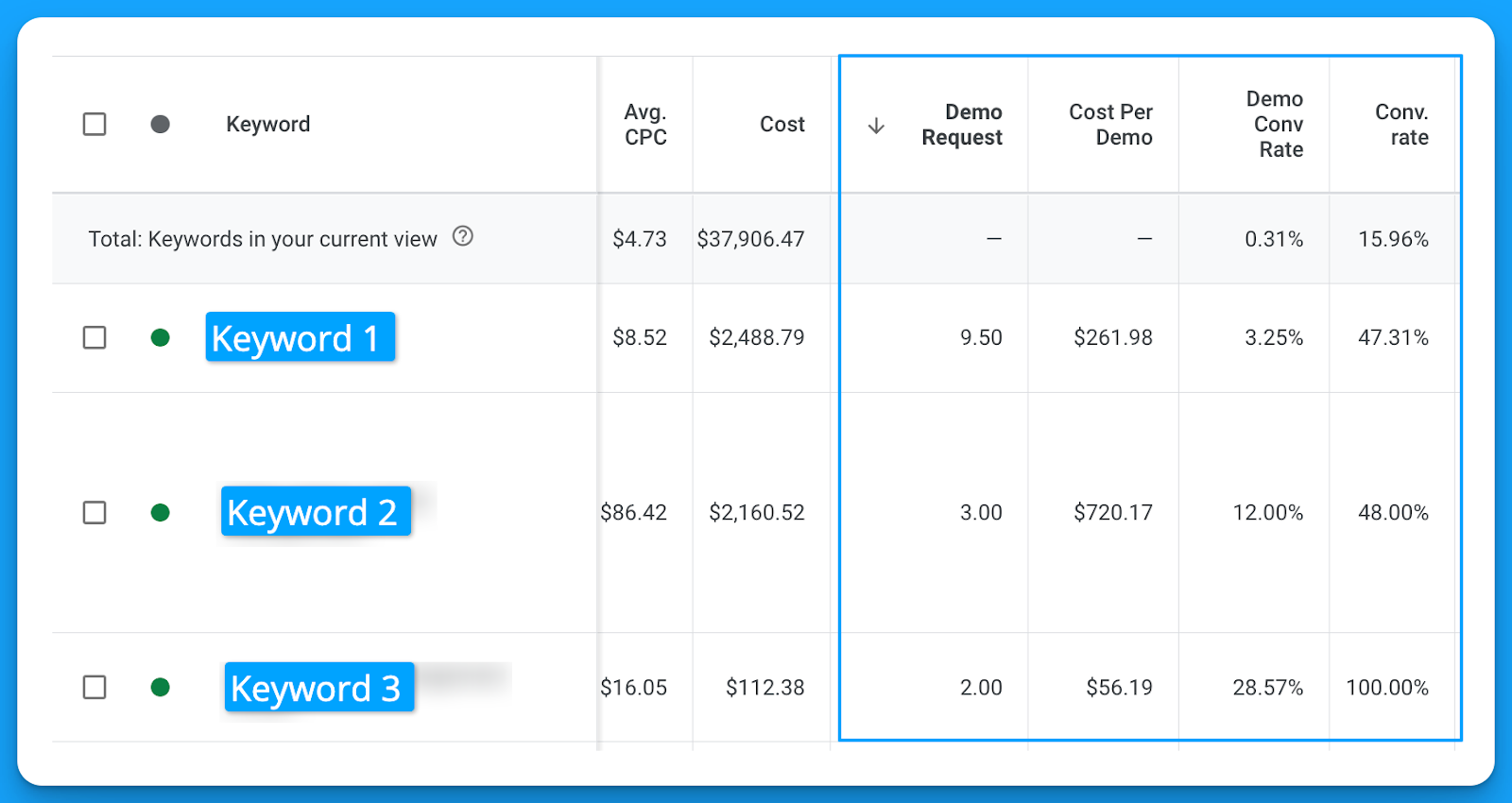
Once you’ve identified some worthwhile keywords it’s time for step 2.
Step 2: Brainstorm your targeted audiences
Google has 5 audience types you can leverage for targeting in your search campaigns.
- Your data = website visitors or contact lists
- In-market = people actively researching a given topic
- Life events = people who’ve accomplished a life milestone (ex: create a business, get married)
- Detailed demographics = industries, company sizes, education level.
- Affinity = people who are interested in a certain topic

You can use a mixture of all these different types of audiences to layer on top of your broad match discovery campaigns.
If you’re dealing with < 500 searches/month for your keywords I recommend clustering a minim of 10-15 audiences on top of your campaigns to help with delivery.
Step 3: Setup a campaign experiment
The safest way you can test broad match discovery is in a 50/50 experiment alongside your top converting phrase match campaign.
You can easily AB test in Google Ads using the campaign experiments feature.
Located under Campaigns > Experiments
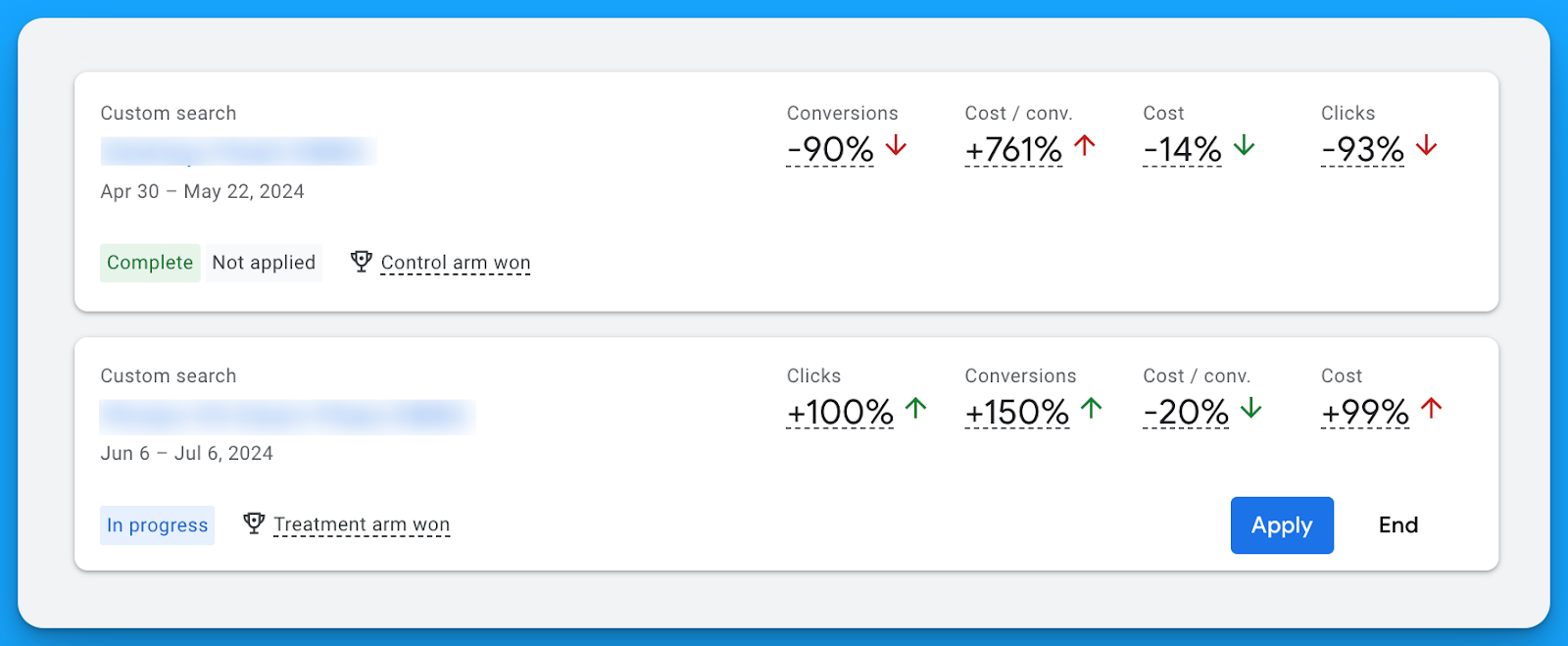
Using this feature build an experiment splitting the traffic by 50% for your original campaign vs the experiment version using broad match AND the targeted audiences you brainstormed in step 2.
Strategy #2: Advertising outside of English
English is the most competitive language in the world with the majority of advertisers.
We’ve seen reductions of up to 70% in our average CPC targeting other languages.
If your company has the resources to sell in multiple languages – take advantage of localization!
Localization campaigns are when you target keywords, write ad copy, and design landing pages that all are in your audience's native language (ex: Spanish, German, Portuguese).
You’ll reap the benefits of lower costs due to less competition.
The downside however with localization is search volume.
If you’re already advertising in English outside of North America and finding success, definitely recommend testing this strategy.
How to implement localized campaigns:
Step 1: Find proven converting phrase match keywords
Review your performance across converting phrase match keywords to identify which you’re going to prioritize testing with broad match discovery.
Don’t rely on “total conversions” make sure you’re viewing performance by keyword based on the custom metrics that matter for your business (ex: Demo, Trial, SQL, SAL, Opp, etc).

Step 2: Brainstorm your targeted languages
Ask your internal team what languages your sales team is able to sell in.
Based on your options make a list of potential languages.
Next, if you’re advertising outside of North America, review the top performing countries and identify their local languages and see if you have the internal resources that can speak that language.
If you can’t sell in this language then this strategy won’t make sense.
Step 3: Hire a local translator
Don’t make the mistake of relying on Google Translate to perform the bulk of your translation.
You’ll want to hire a translator that grew up in the area in which you want to advertise.
For instance, if you’re advertising in Portuguese.
The dialect for Europeans living in Portugal and those living in Brazil is very different.
A local Brazilian can tell if it’s not their dialect just like a native Portuguese.
I recommend hiring locals off Upwork can be as low as $12/hour depending on the language.
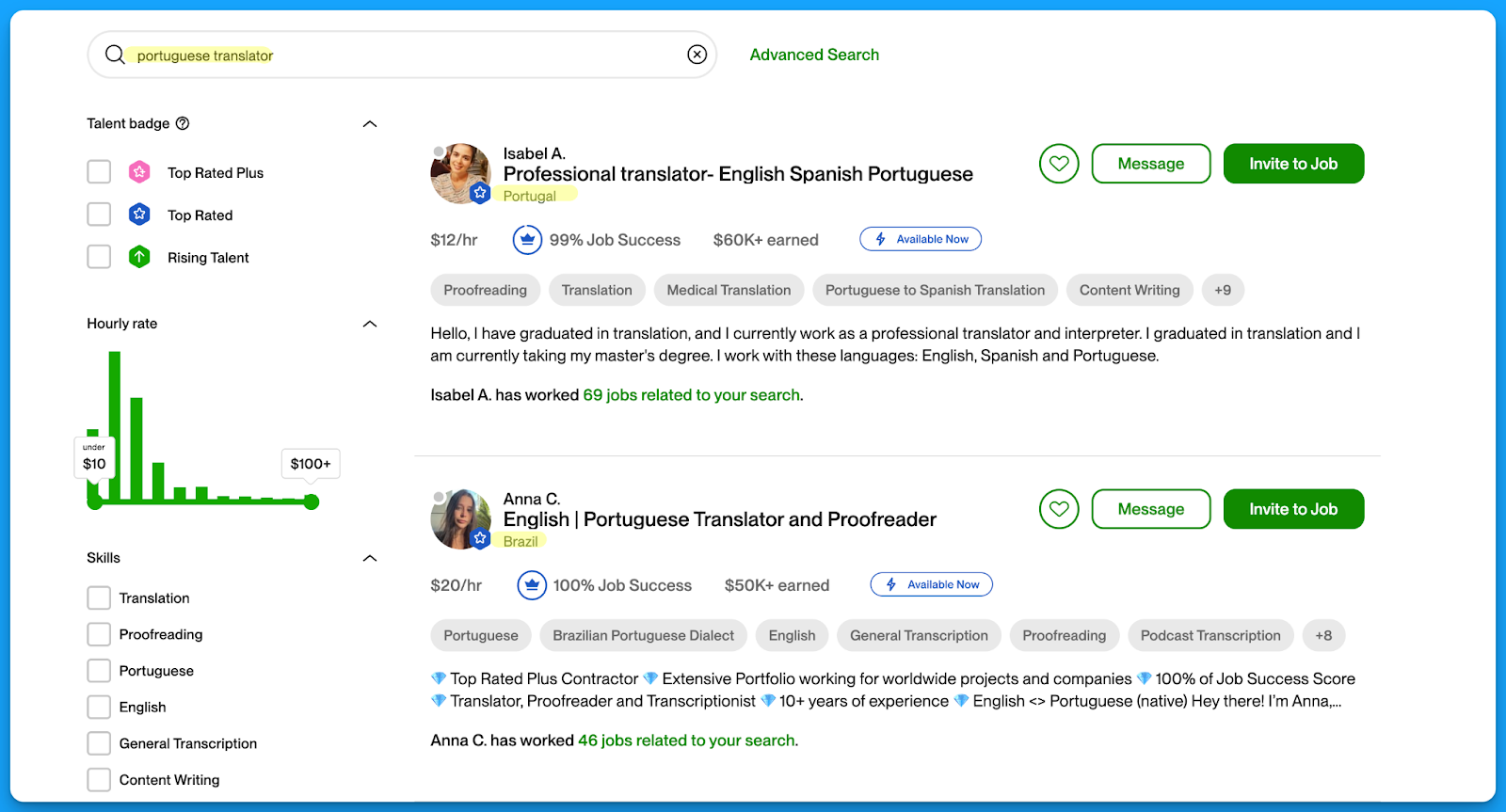
These translations will make a world difference in your ad and landing page copy.
Strategy #3: Industry campaigns
Industry campaigns can be great for coverage and quality.
This is where you’re going to bid on a desired keyword and add a related industry term.
For example, let’s say bidding on the keyword “crm software” here’s how you can modify this keyword to make it industry specific:
- healthcare crm software
- crm software for fintech
- crm software for small businesses
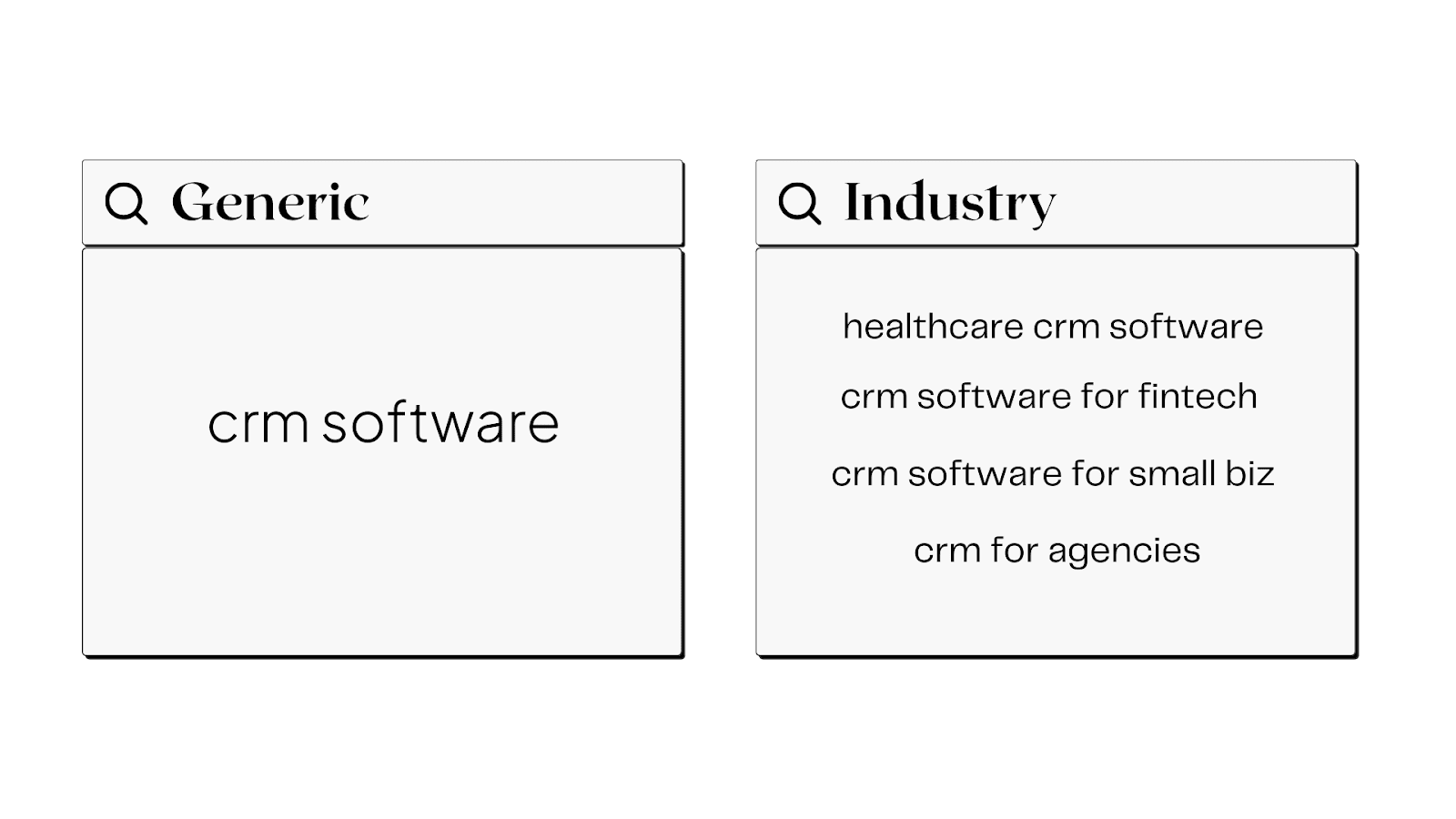
The benefits of industry campaigns:
- Personalized ad copy that can yield greater CTRs
- Higher quality leads due to a more qualified search term
- Lower cost per click prices due to less competition
The downside however is search volume (the constant struggle of Google for SaaS 😅).
How to implement industry campaigns:
Step 1: Find proven converting phrase match keywords
Just like the other strategies we’re going to identify proven keywords first that we can create industry variations for.
Step 2: Brainstorm your target industries
Run a win rate analysis in your CRM and understand which industries have the shortest sales cycles and largest deal sizes? Based on your findings, prioritise the industries in which you want to target.
Step 3: Build and prevent keyword overlap
Once you have your keywords and target industries you’re ready to build your campaigns.
Make sure to add your industry terms as negative keywords in your generic non-brand campaigns.
Otherwise you can have people seeing your generic ads for your industry terms.
Hope you found this article helpful!
Best of luck scaling your Google Ads campaigns for your SaaS.
From Clicks to Conversions: Master Google Ads for B2B 🔥
If you want to become a Google Ads pro, check out our free B2B Google Ads courses, where you'll learn how to launch, optimize, and scale your campaigns to drive pipeline and revenue.

Here's what you'll learn in each course:
⚙️ B2B Google Ads 101 - How to Launch Dangerously Effective Campaigns for Beginners
- The Googleverse: The Game You're Playing & How To Win
- Measurement: How to Make Sure You're Profitable
- Targeting: How to Show Up For the Right Searcher
- Planning: Putting It All Together
🎯 Google Ads 102 - How to Clicks Into Profit
- Visibility: How To Find the Hole Sucking Profits
- Workflows: How to Optimize On a Daily, Weekly, Monthly & Quarterly Basis
- Experimentation: How to Test & Automate Profitability
- Troubleshooting: How To Solve Inevitable Problems
🚀 Google Ads 103 - How to Scale Google Ads For Advanced Advertisers
- Methodology: How to Vertically Scale Google Ads From A-Z
- Campaigns: Scaling Horizontally Through Campaign Themes
- Channels: Scaling Outside of Paid Search
Click Here to Join 1,000+ B2B Marketers Today and start leveling up your advertising skill set.
Takes < 90 seconds to sign up (seriously we timed it 😂)
People Also Ask
How can I effectively measure the success of my Google Ads campaigns for SaaS products?
Utilize key performance indicators (KPIs) such as conversion rates, cost per acquisition (CPA), and return on ad spend (ROAS). Implement tracking tools like Google Analytics to monitor user behavior and campaign performance.
What are the best practices for creating compelling ad copy that resonates with my target audience?
Focus on highlighting unique selling propositions (USPs), addressing customer pain points, and including clear calls-to-action (CTAs). A/B testing different ad variations can help determine what resonates most with your audience.
How can I optimize my landing pages to improve conversion rates from Google Ads traffic?
Ensure landing pages are relevant to the ad content, load quickly, and have a clear, concise design. Incorporate strong CTAs and minimize distractions to guide users toward the desired action.
What role does keyword research play in the success of Google Ads for SaaS, and how should I approach it?
Keyword research is crucial for targeting the right audience. Use tools like Google Keyword Planner to identify high-intent keywords relevant to your SaaS product, and consider long-tail keywords to capture more specific search queries.
























%20-%20new%20v2.png)













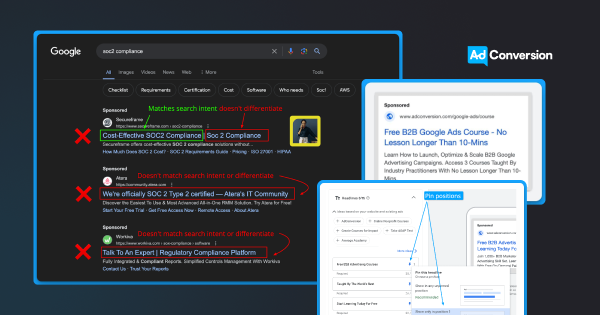
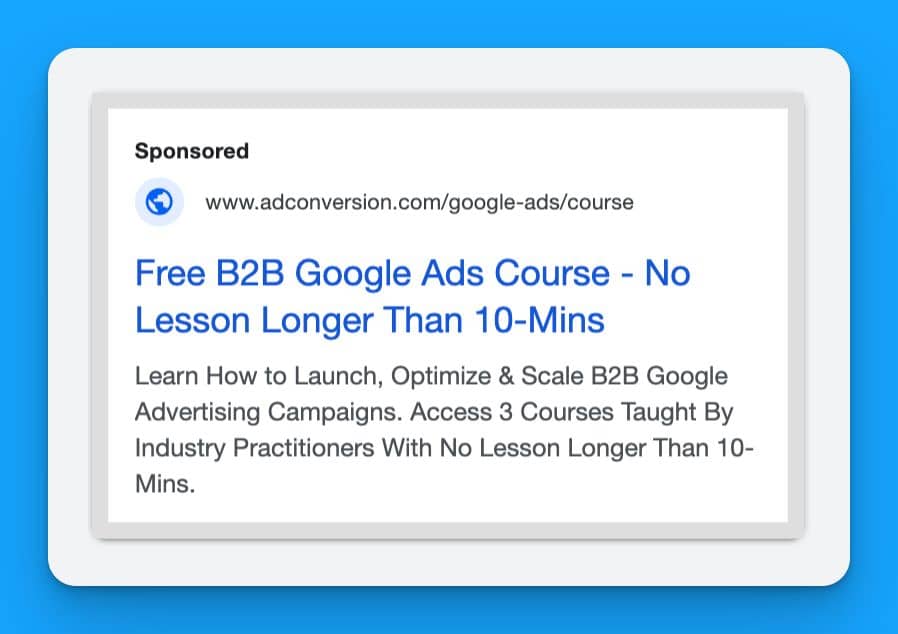

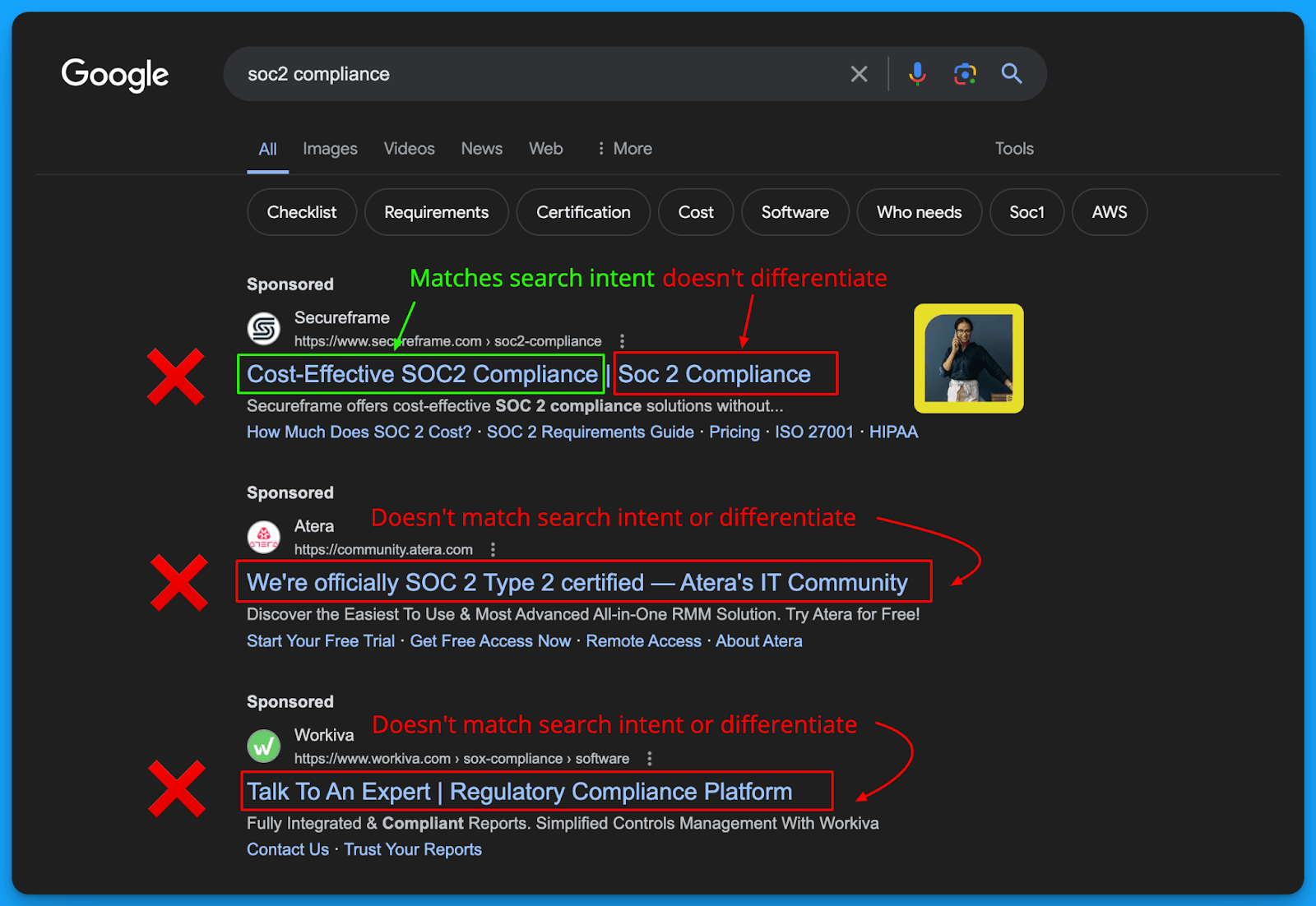
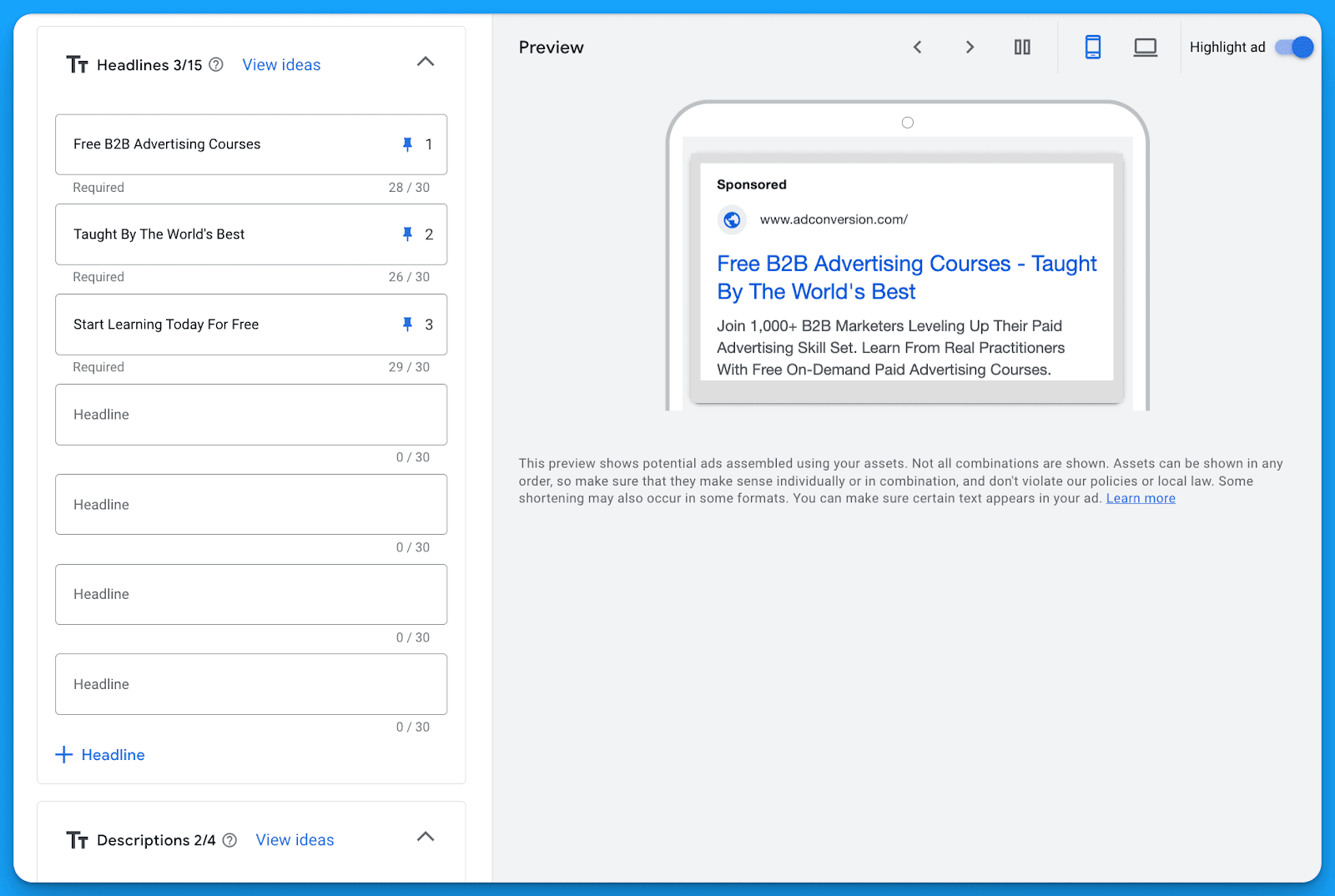
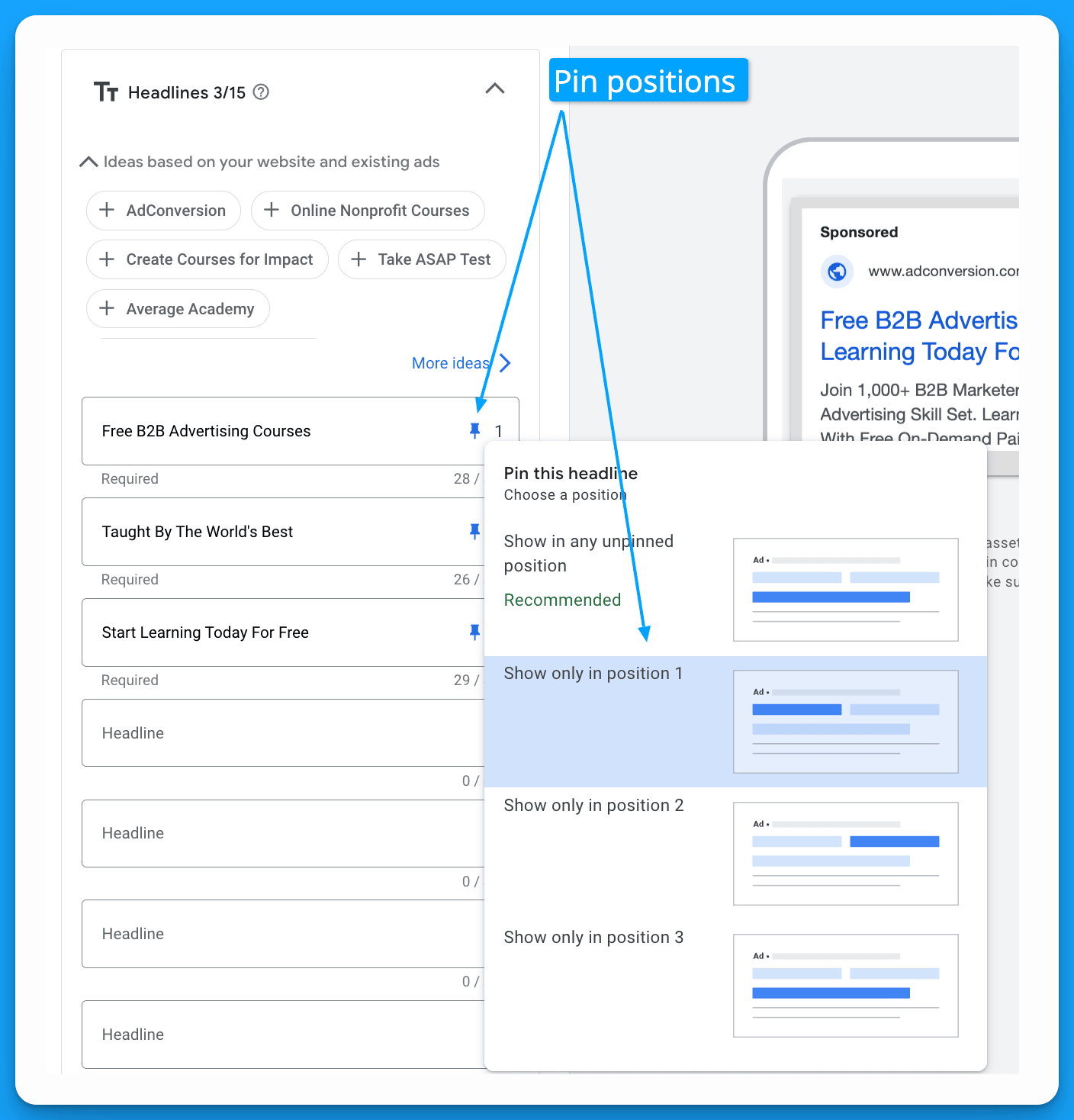



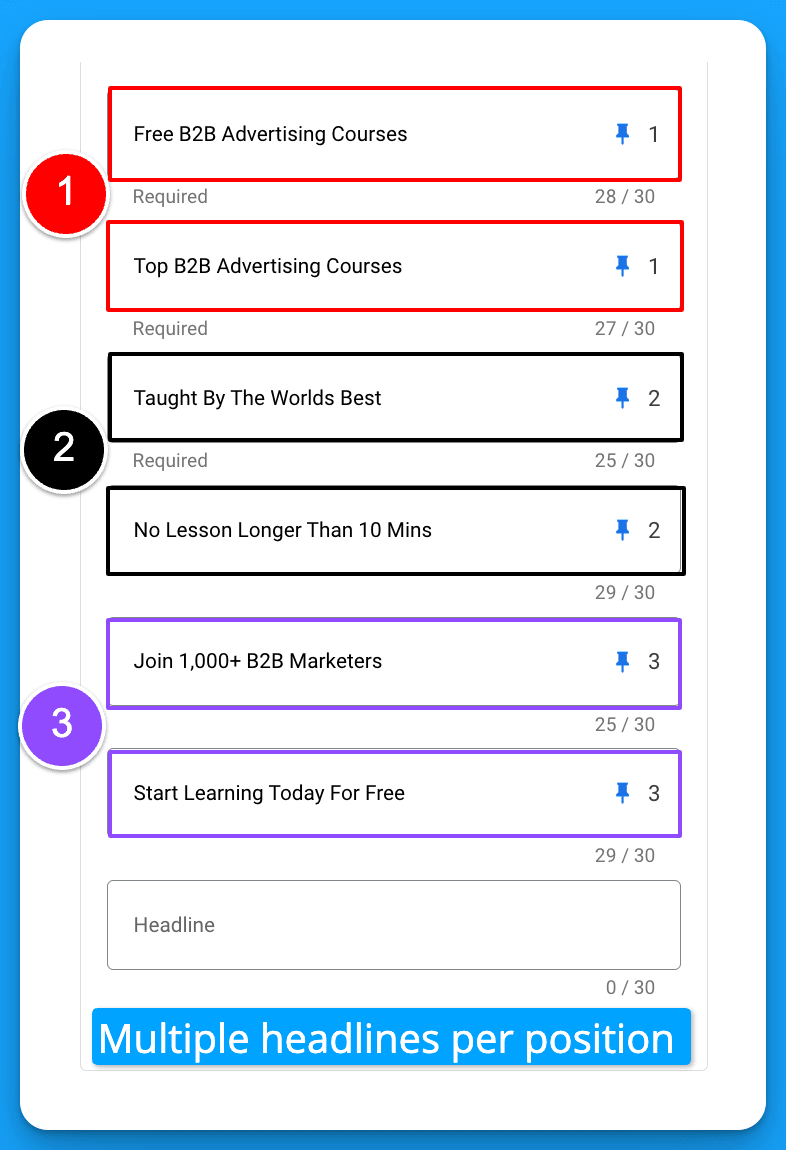
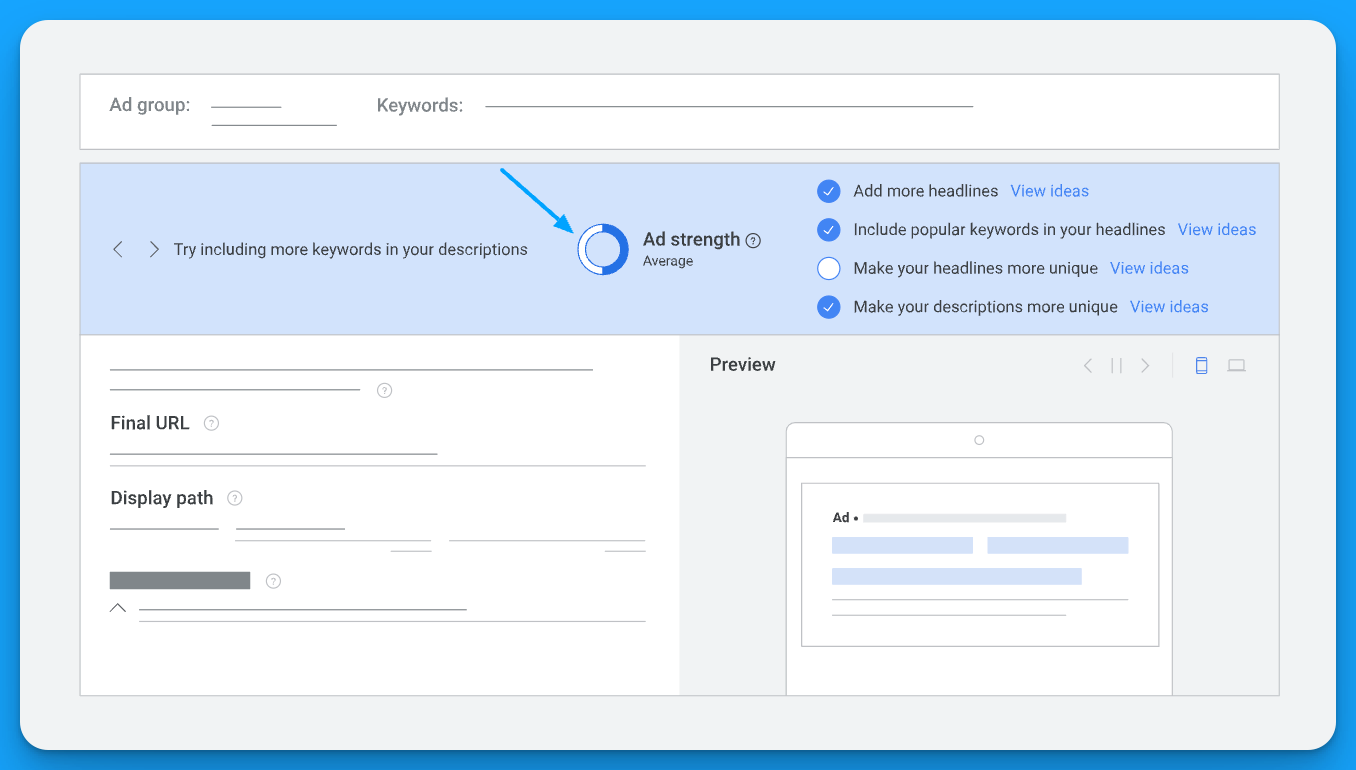

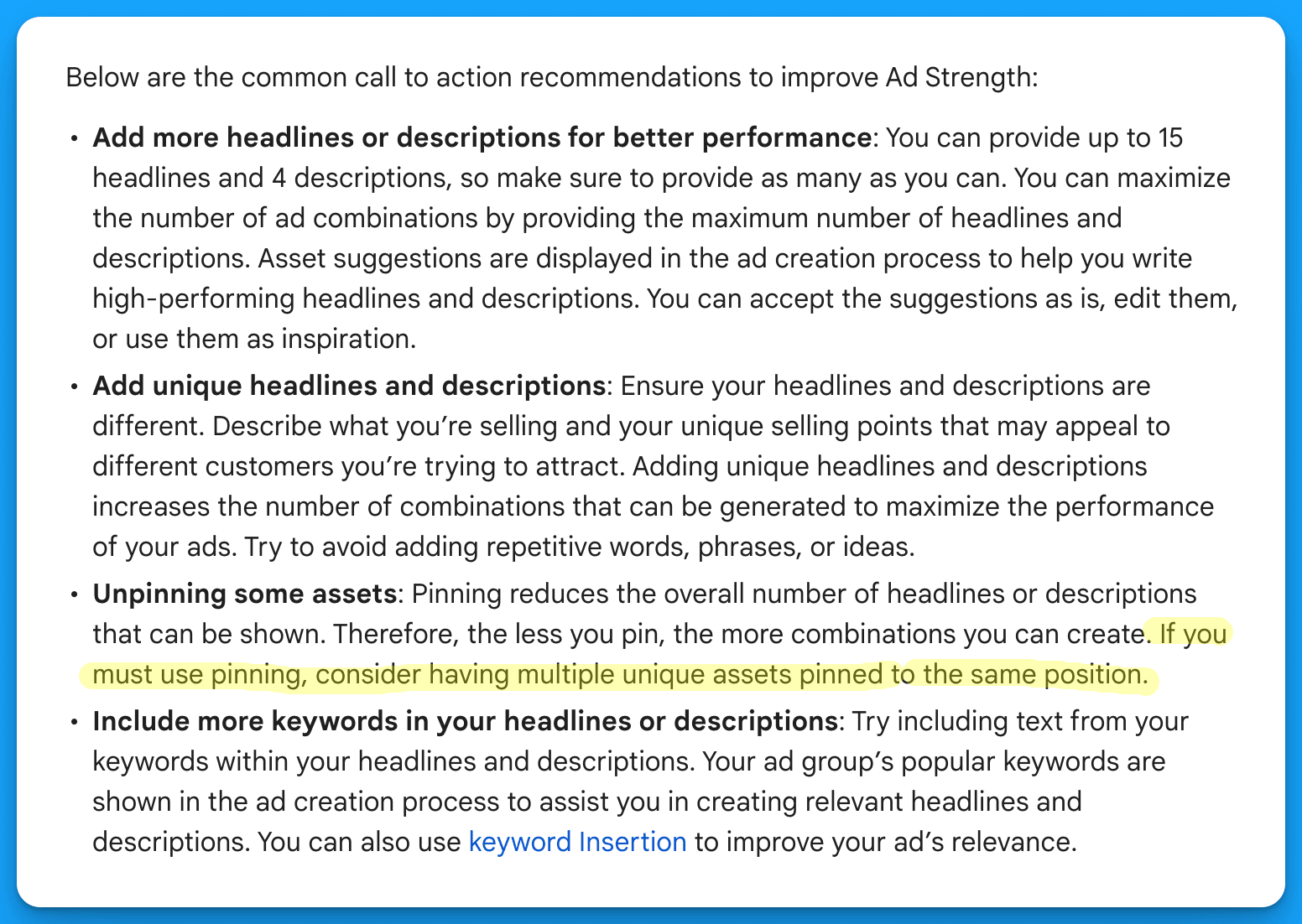
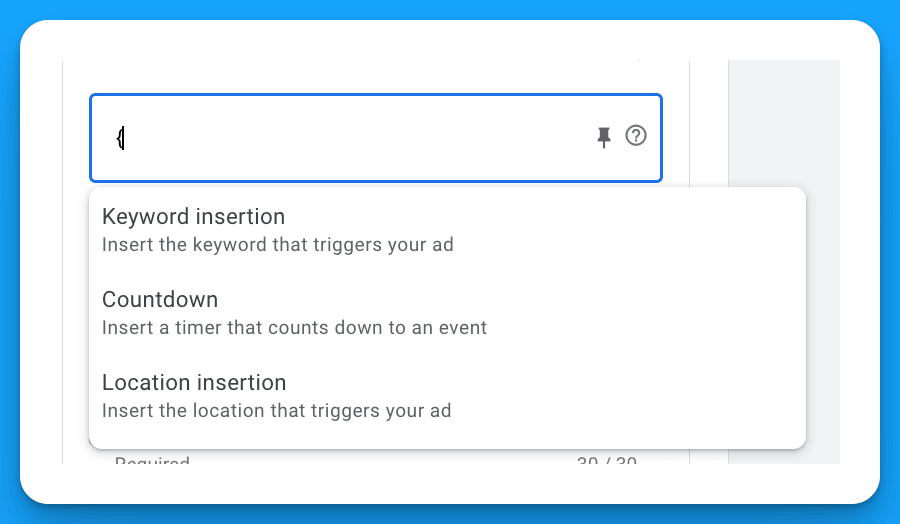



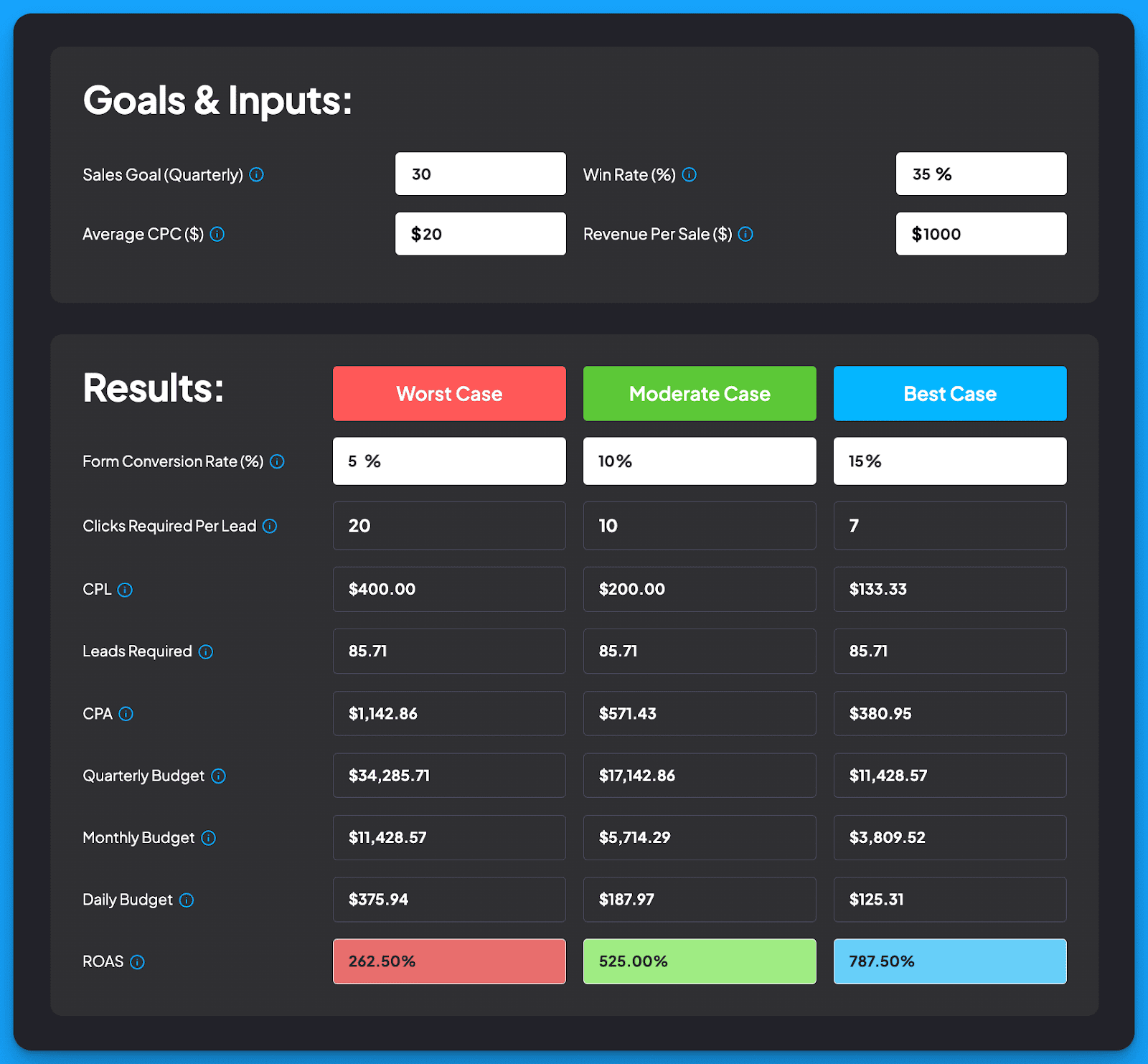
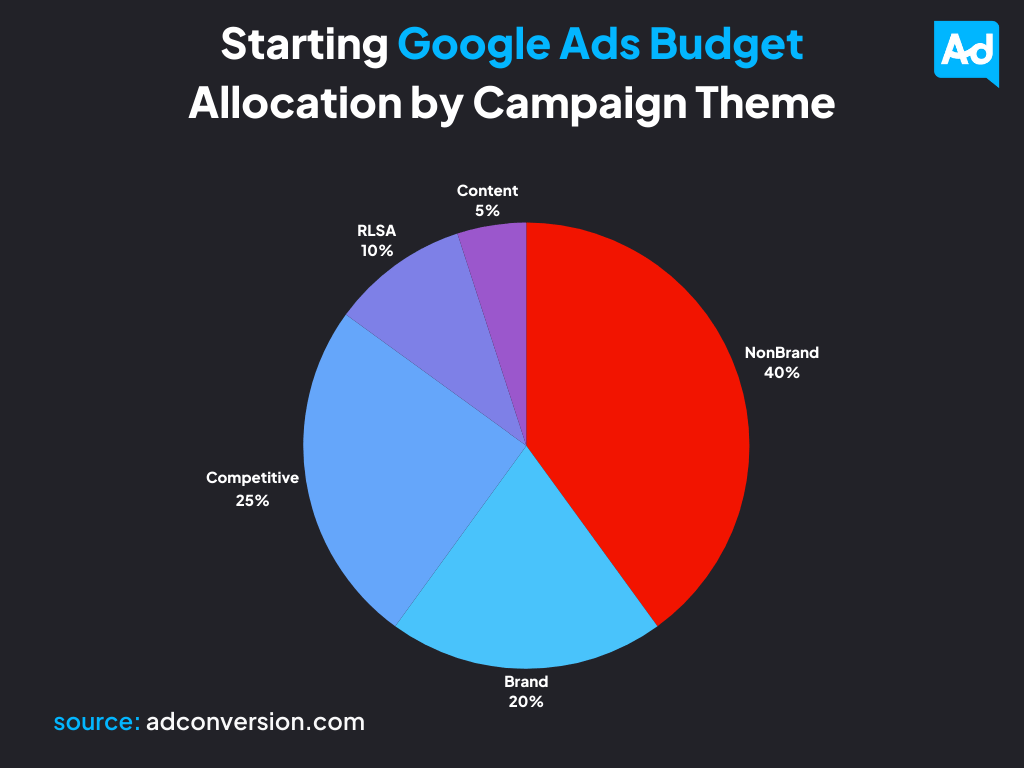




















.png)









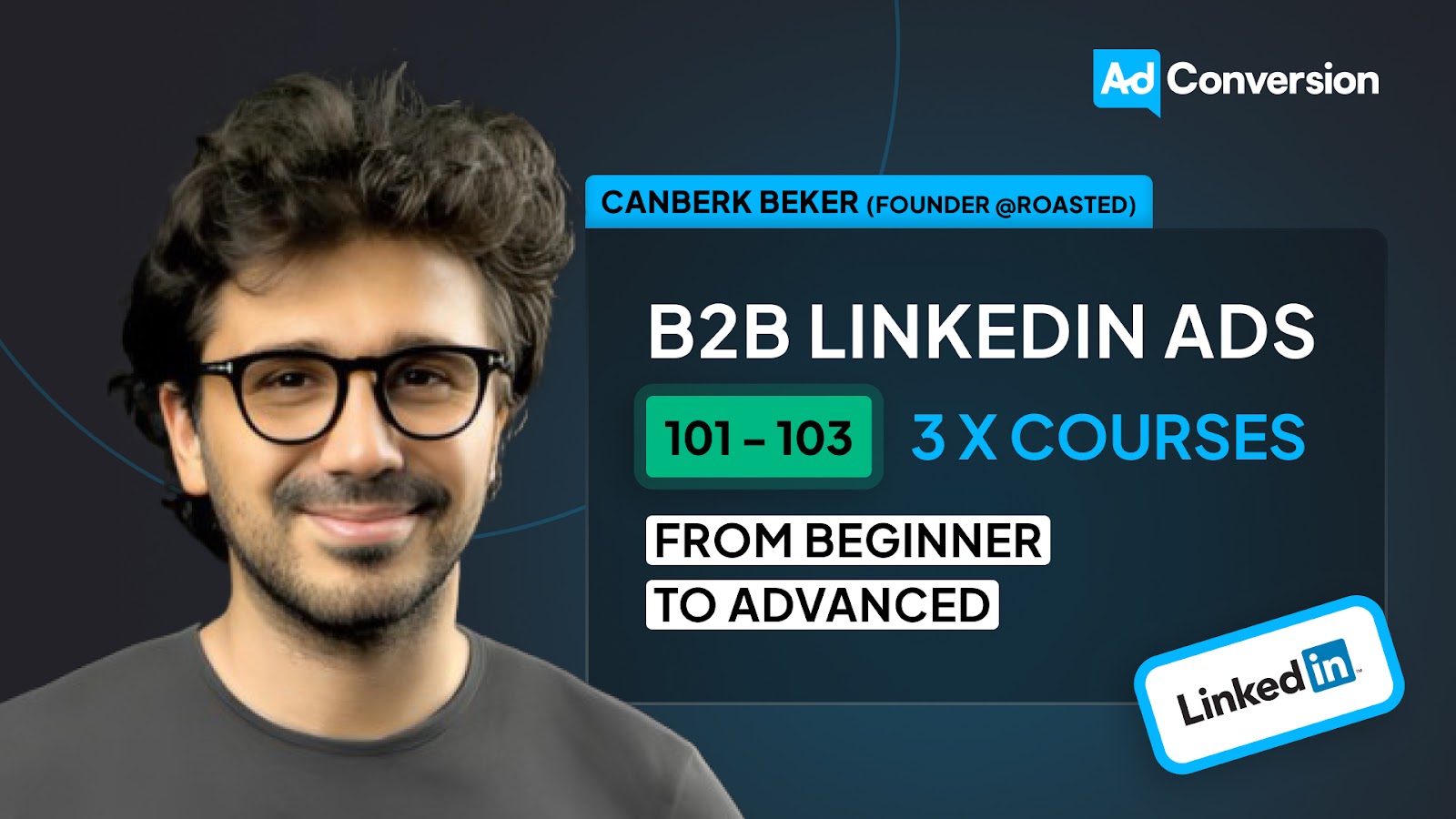








.png)

